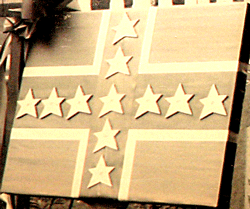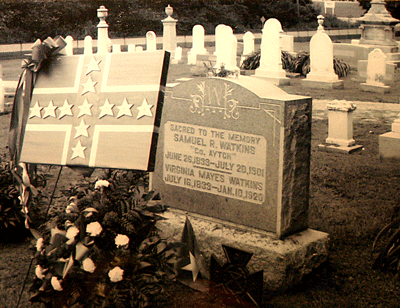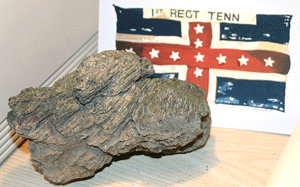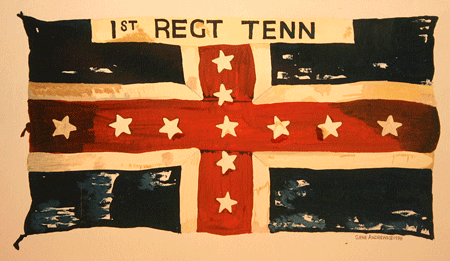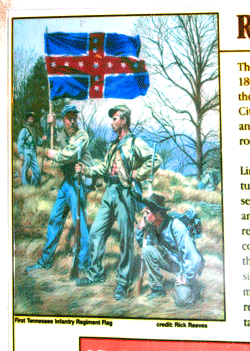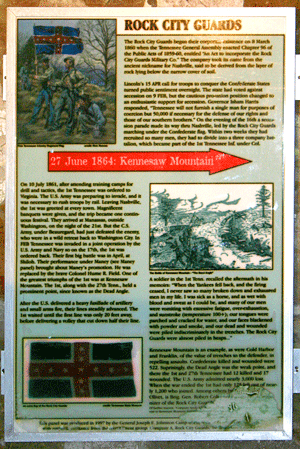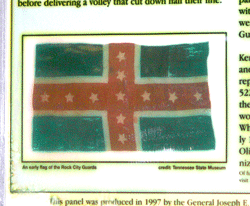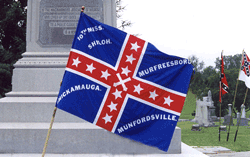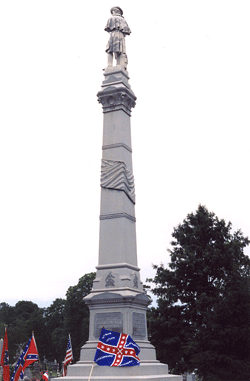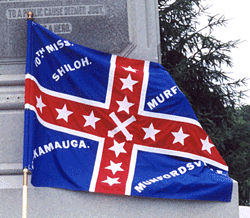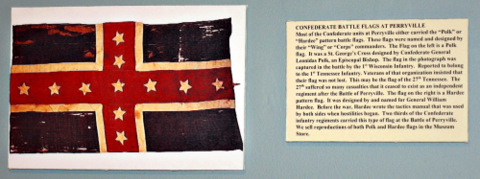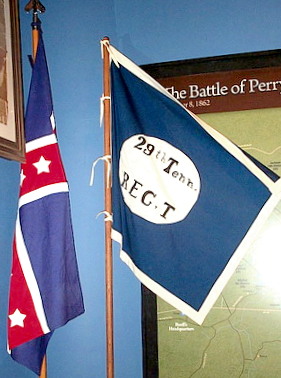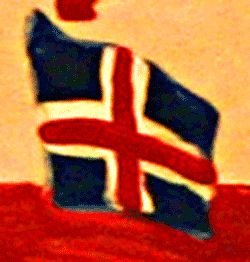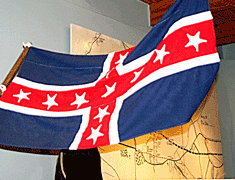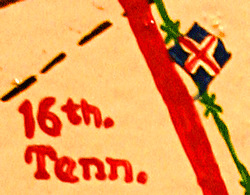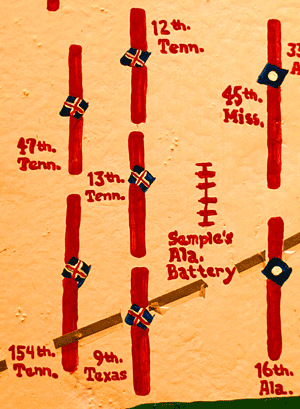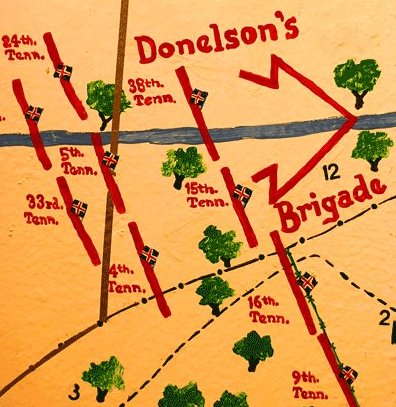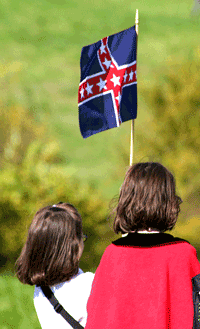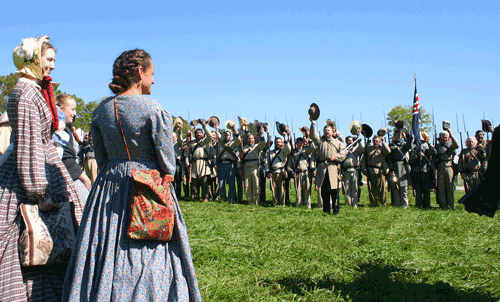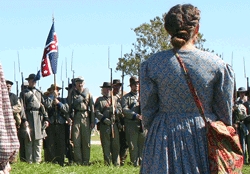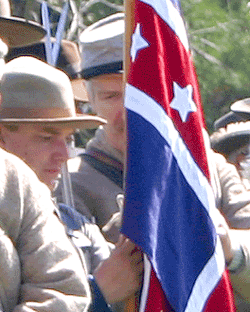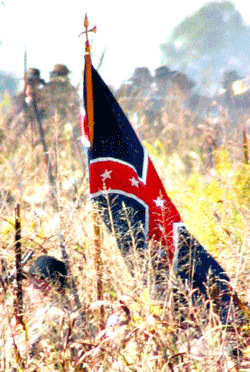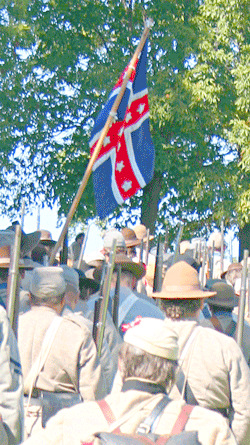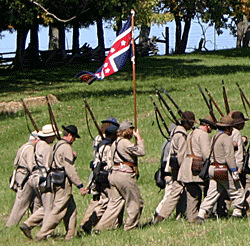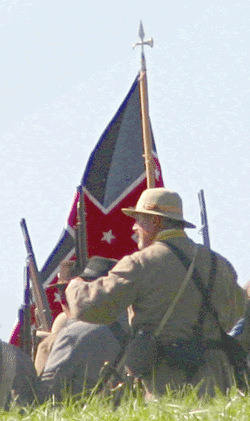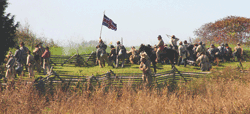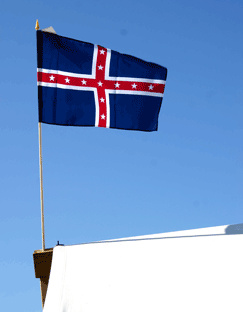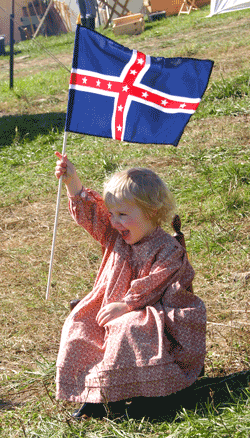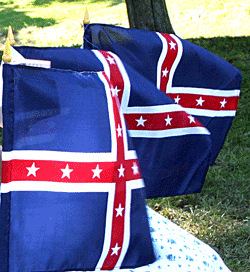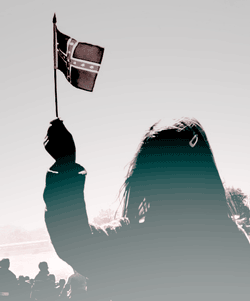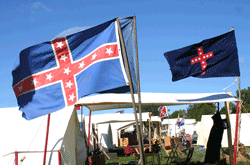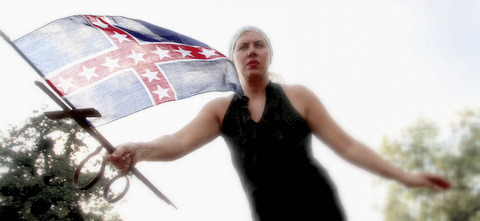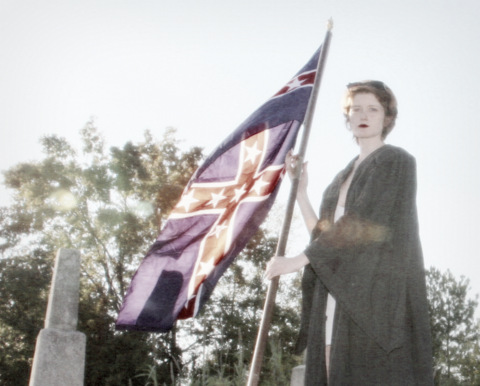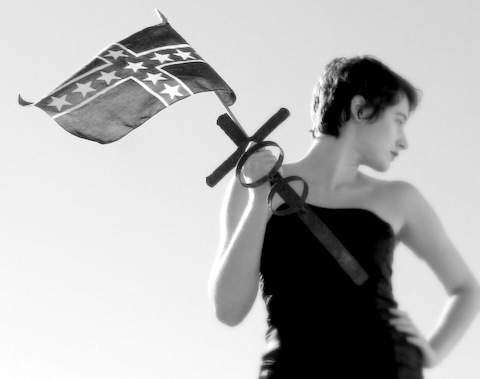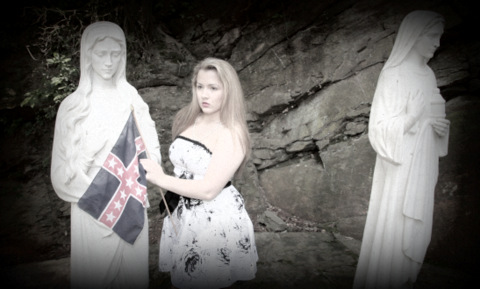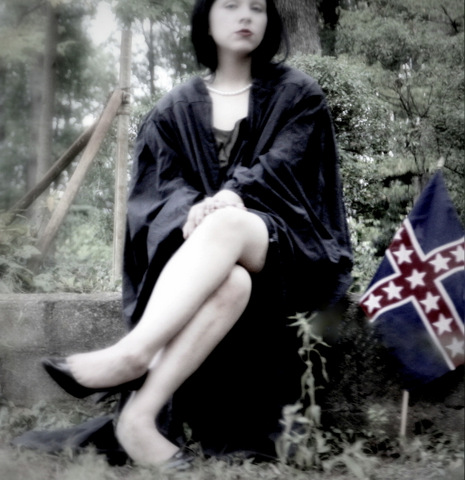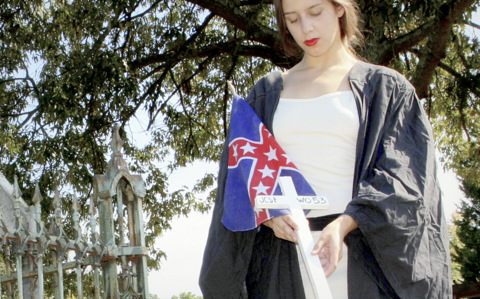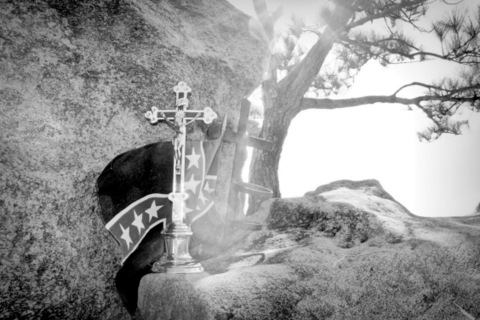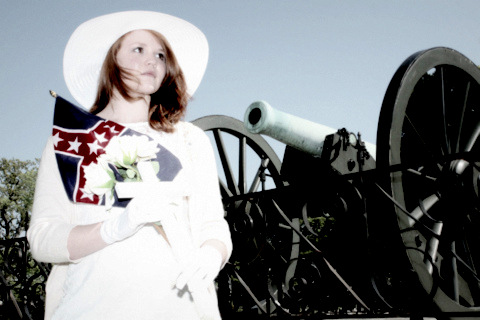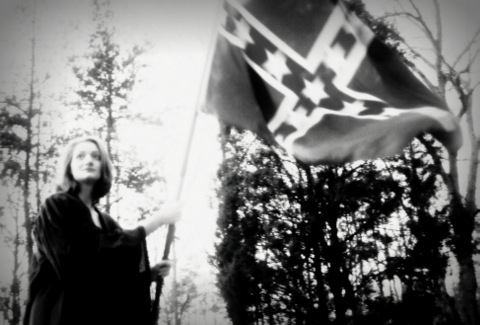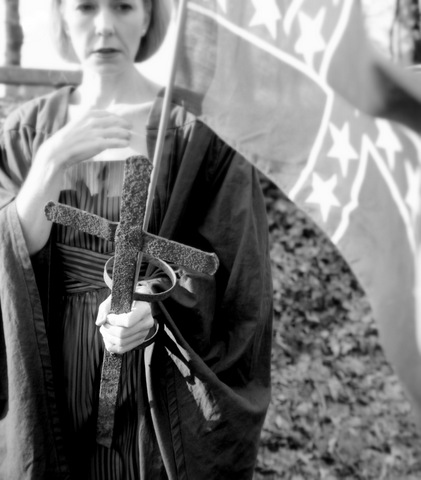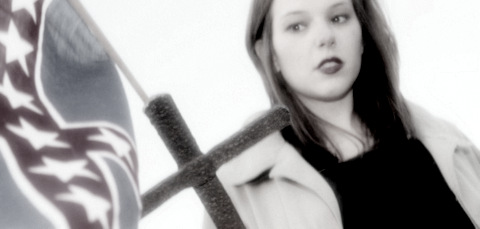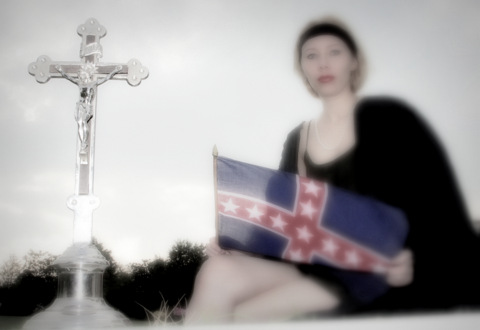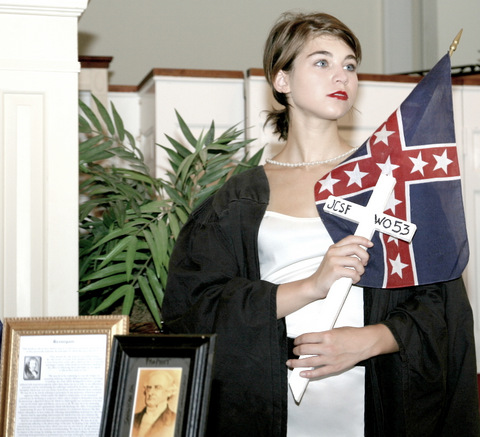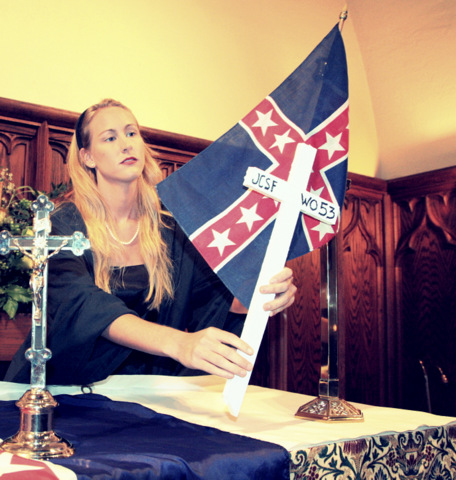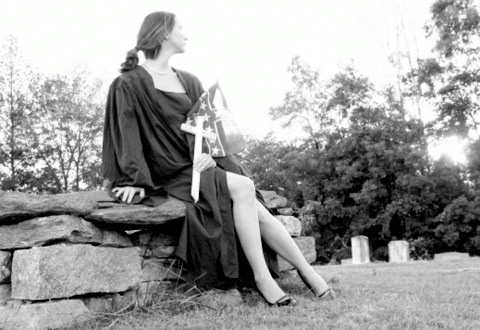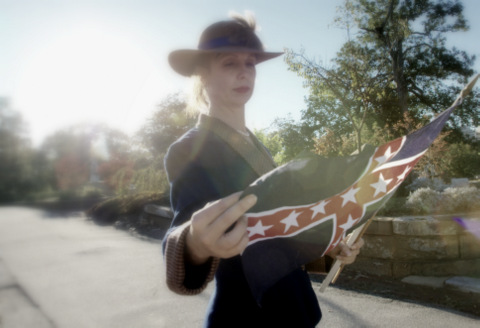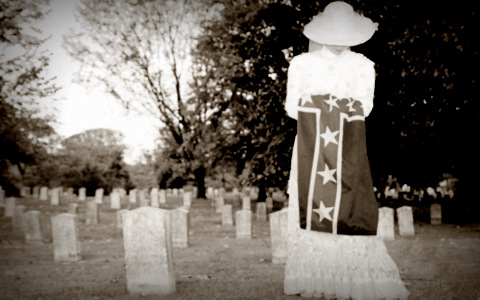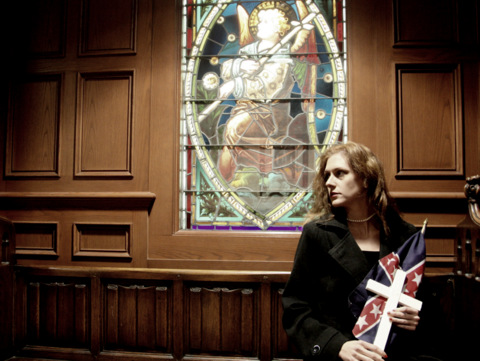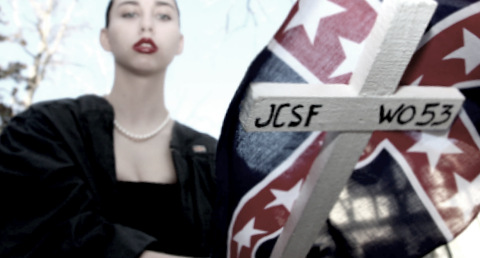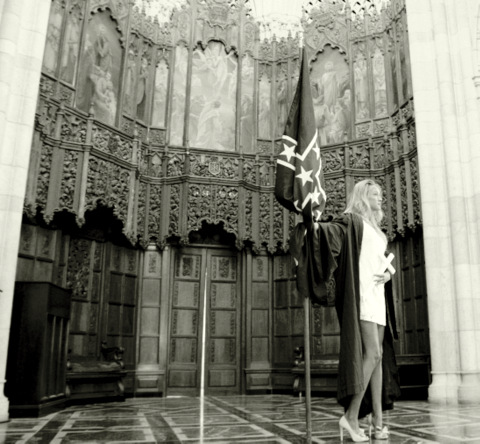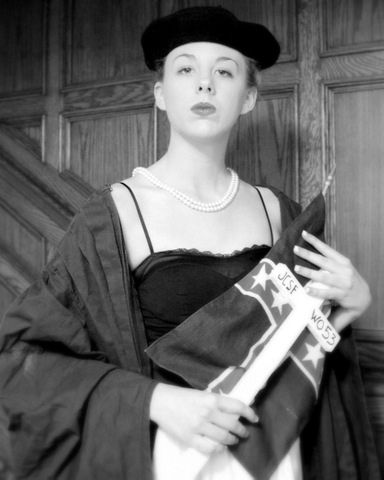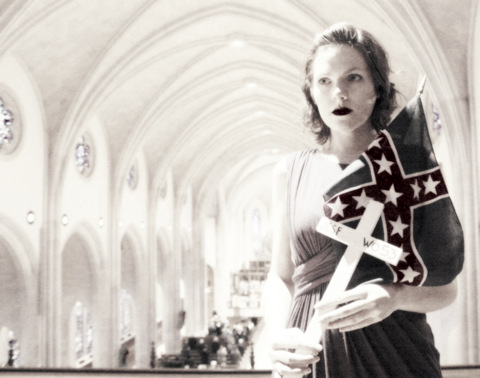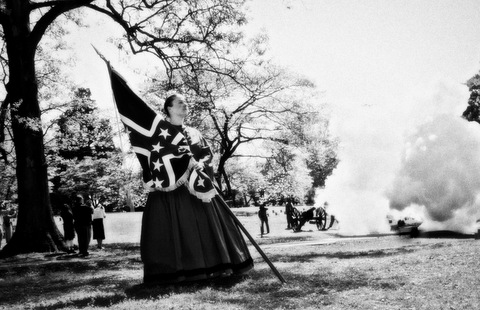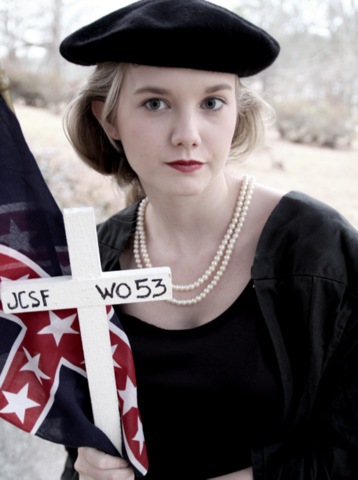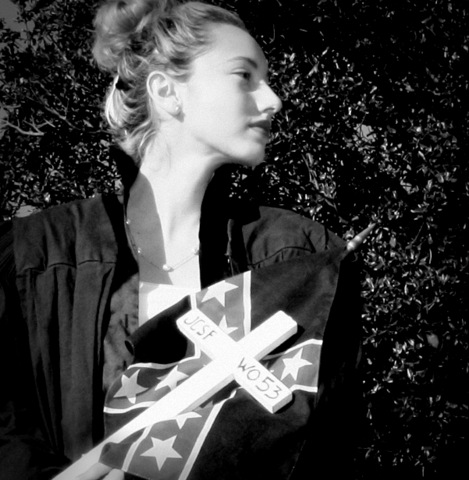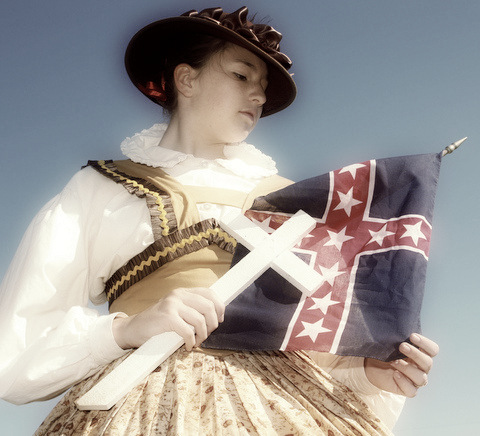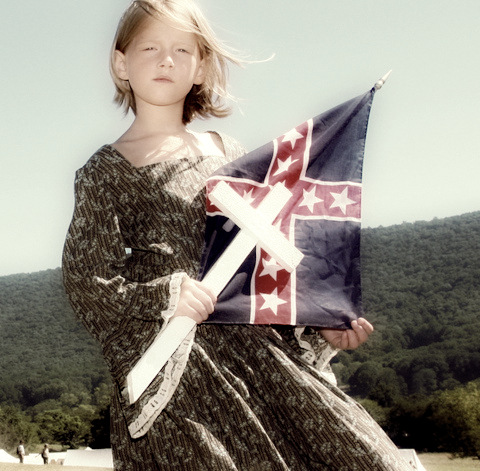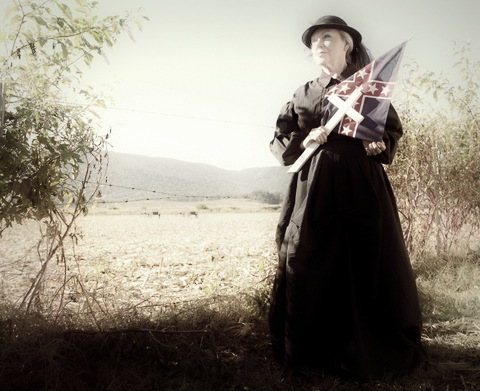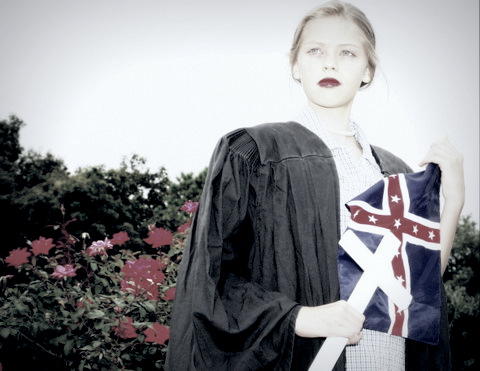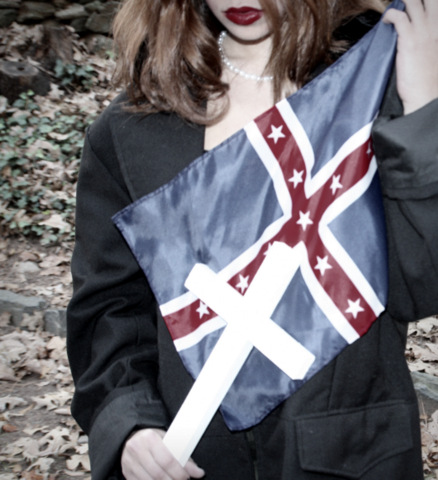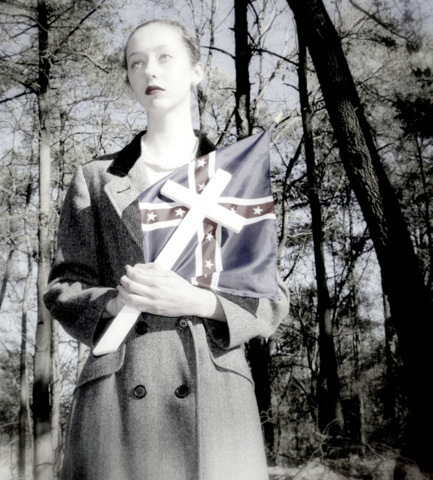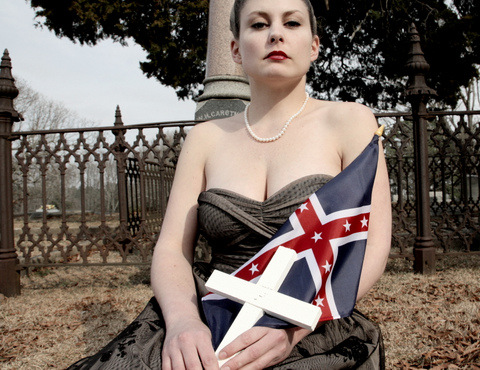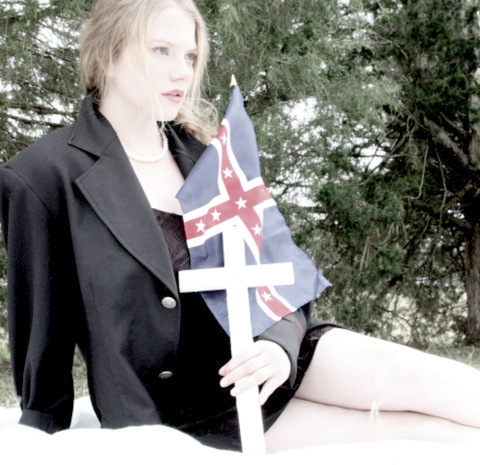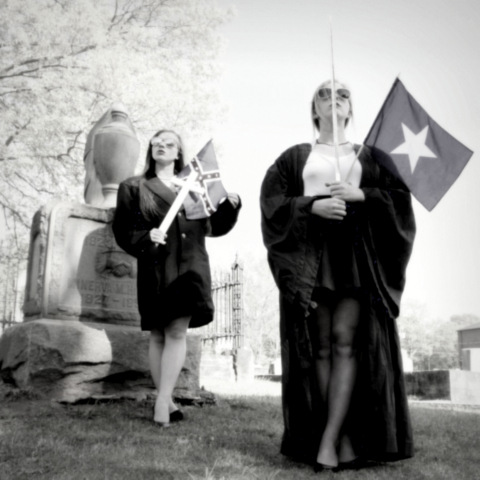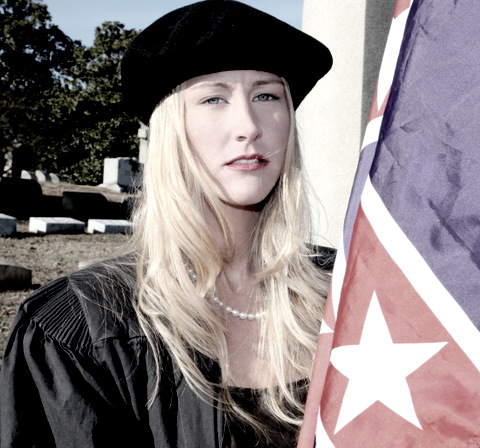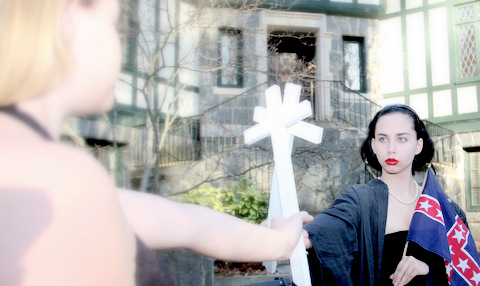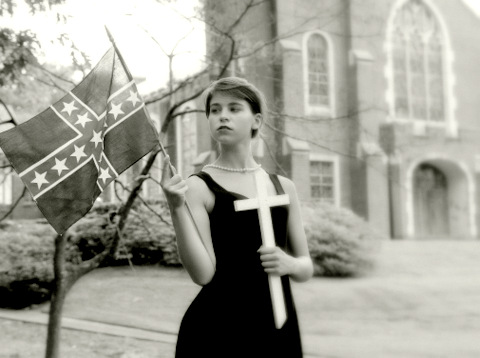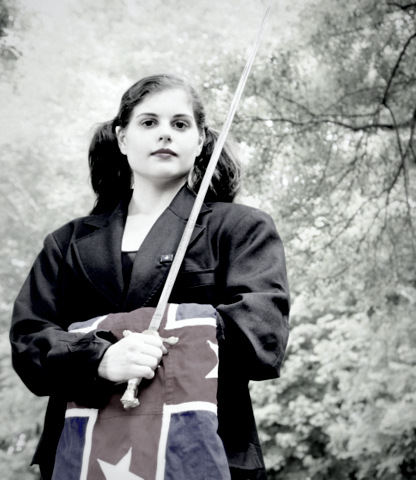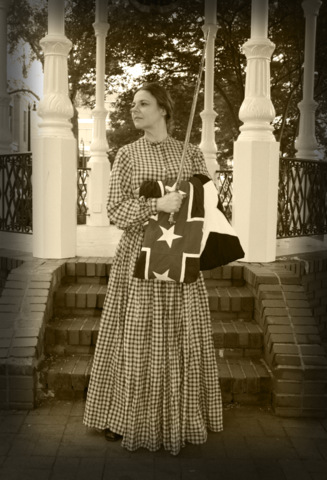Domainian
Battle Standard
___________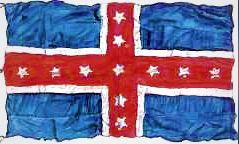
_____
"This is a Christian symbol which is
organic to the founder and history of this place."
-resident Domanian's
observation upon receiving initiation badge, re Polk Corps flag's
significance to The University of the South, May, 2006, Easter Semester,
during the Sesqui-Centennial of Bishop Polk's writing his New Orleans
Letter
_____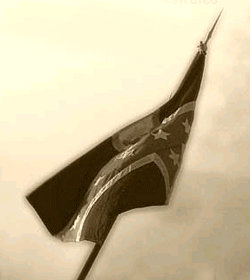
(Source: www.pbase.com/rubenkc/
battle_of_perryville)
_____
"The events of
the [War Between the States and Reconstruction] have the power to arouse
antagonisms that are apparently deeply rooted in the American temperament,
if not in human nature itself. It is a power seemingly undiminished by the
passage of years..."
-Ludwell H. Johnson,
NORTH AGAINST SOUTH: The American Iliad, 1848-1877,
1978,1993
_____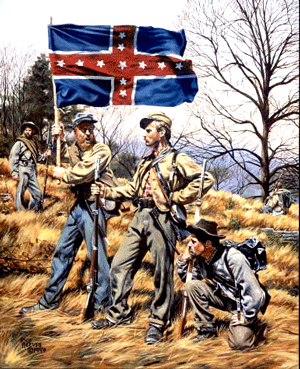
"1st Tennessee," by
Rick Reeves
(Source:
www.americanahistoricalart.com/
civil_war.html)
_____
|
From THE LAST CHRISTIAN IN
ALABAMA, draft manuscript: |
_____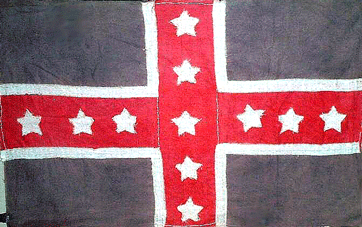
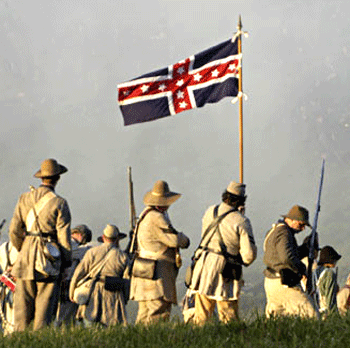
Perryville Reenactment, circa
2005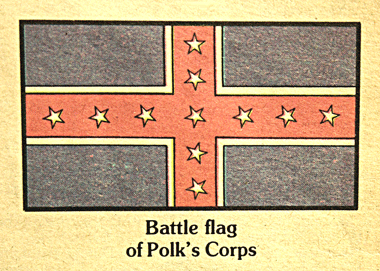
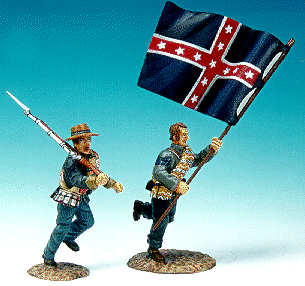
1st Tennessee Regiment,
Bearer & N.C.O.
(Source:
http://www.frontline-figures.com/civil/indexconf.html)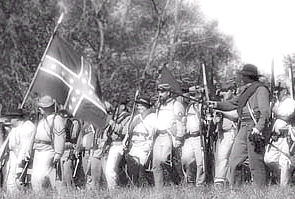
"Shoulder to
Shoulder"
(Source:
www.pbase.com/rubenkc/ battle_of_perryville) 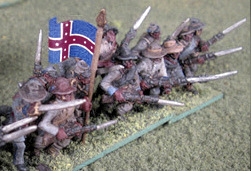
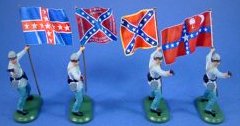
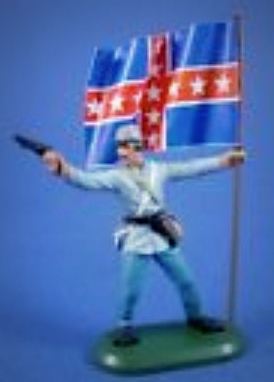
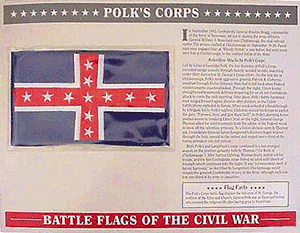
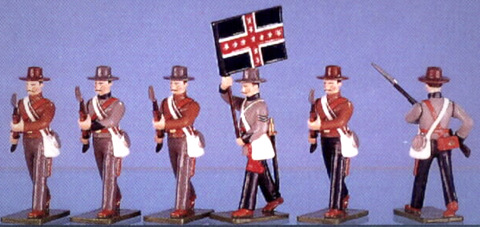
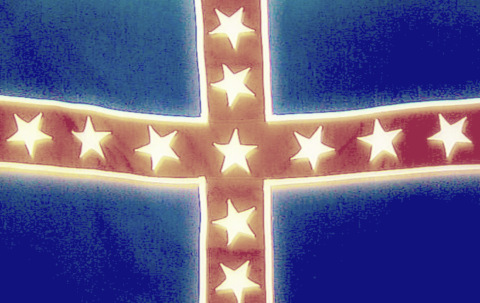
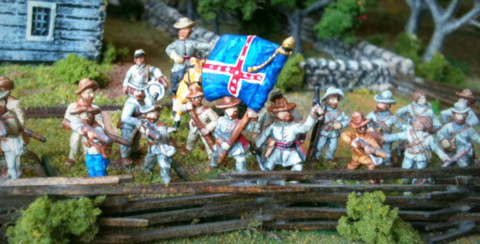
(Source:http://cigarboxheroes.blogspot.com/2011_04_01_archive.html;
viewed 5/21/2014)
(Source:
http://9thtexas.tripod.com/flags.htm;viewed
5/21/2014)
_____
Perryville 150th Reenactment,
Advent Semester, 2012: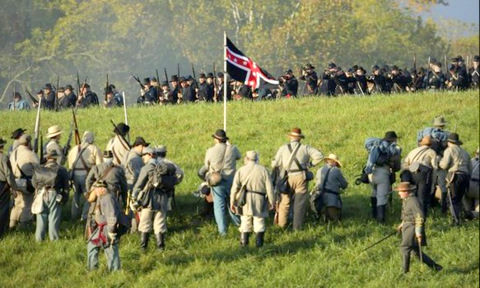
(Source:http://www.examiner.com/article/this-week-the-civil-war-the-battle-of-perryville;
viewed
5/21/2014)
___________
"Why
does it always seem like the people who invoke the movement of history
actually disdain the value of the past and instead mean to force on us
their own peculiar vision for the future?"
-Quentin B. Fairchild, "Flipping History, Chronicles, June 2014
___________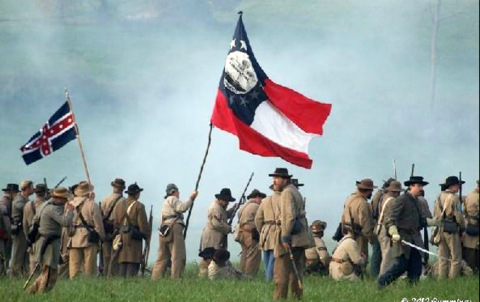
(Source:
http://graphicenterprises.net/html/battle_2012.html; viewed
5/21/2014)
_____
From
http://www.scv.org/curriculum/part8.htm; viewed
5/23/2014:
Southern View of History: The War for
Southern Independence
PART VIII. FLAGS AND SYMBOLS OF THE CONFEDERATE STATES

General Leonidas Polk's Corps, Army
of Tennessee: The Confederate General and Episcopal Bishop of Louisiana
chose this Battle Flag. The Episcopal Church flag is a red cross of St.
George. It is featured as the central device in Polk's Corps flag. The is
a white fimbriation to separate the cross from the blue field and white
stars representing the Confederate states are placed on the red cross.

The
Armies of Tennessee, Mississippi, the states departments, and the
Trans-Mississippi Department all had variations on size, shape color and
markings on its battle flags. Many CSA battle flags were created by other
unit commanders for the same reasons the Army of Northern Virginia flag
was, to settle battlefield confusion. General Leonidas Polk, an Episcopal
bishop, created his flag (a St. George's cross) in 2 versions for his
corps; General Hardee's Corps used the famous "moon" flag of a white
device (circle, oval or rectilinear, depending on when issued) on a blue
field (the flag was actually invented by General Simon Bolivar Buckner);
General Braxton Bragg's Corps used flags inspired by the Army of Northern
Virginia flag but with 12 six-pointed stars on it; Breckenridge's Corps
used First Nationals well into 1863 as their battle flags; Bowen's
Missouri Division used blue flags with red borders and a white Latin cross
on it; Van Dorn's Army of the West used a Middle Eastern looking flag with
a red field, either yellow or white stars and borders.
As for flags
inspired by the Army of Northern Virginia flag, The Army of Tennessee
(Army of Tennessee ) flag of 1864 was supposed to be square also like the
Army of Northern Virginia (as per Johnston's orders to the Atlanta Depot)
but the depot goofed and they came back rectangular. The flags of the
Department of Alabama, Mississippi & East Louisiana ( the command unit
for Polk's Army of Mississippi, Forrest's Cavalry Corps and others) were
also slightly rectangular but with only 12 stars. These were made in
Mobile by contractors Jackson Belknap and to a lesser extent James
Cameron. Neither flag had colored borders. The flags of the Department of
South Carolina, Florida and Georgia were also Army of Northern Virginia
flag inspired but were built differently. These square flags were made by
the Charleston Depot and began showing up in April 1863. They can be
discerned easily from Army of Northern Virginia flags by their wider cross
and colored pole sleeves of red or blue (Army of Northern Virginia flags
were tied to the poles).
_____
From: http://www.kevinking.com/GIBlues.html; viewed
12/19/05:
American Confederate Hero Gen.
Ector
Shirt design of a Texas hero I did and
then I printed as many
I could cram into the back seat of my jalopy
and headed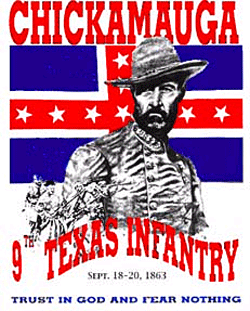
south to a Texas reenactment, they sold
out in one day.
I like Texans...
they do love their
history.
_____
Confederate Veteran, Volume 9, Number 3, March,
1901: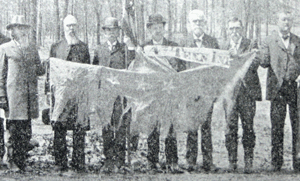
4th Tennessee Infantry
Veterans at Shiloh
______
From http://www.scvtaylorcamp.com;
viewed 2/11/2006: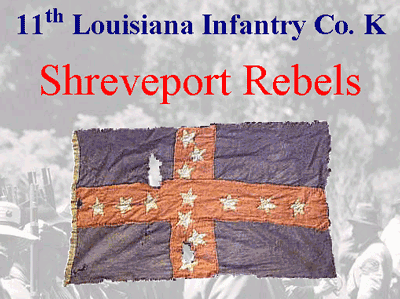
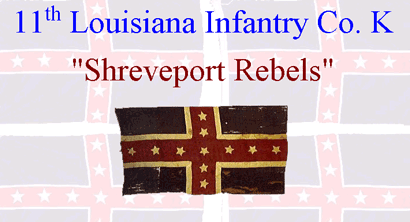
______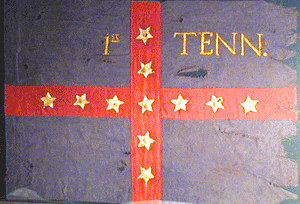
Hand sewn 1st Tenn. variant
replica; original
unknown.
_____
"Confederate Battle Flags 1861-1865" and "Southern Symbols of
Christian Unity,"
from the Cavalier Shoppe, 2006-2007
Catalog, Volume 12, Bruce,
Mississippi:
|
|
_____
From
http://confederate_gray.tripod.com/photos.html; viewed
5/26/2014:
|
_____
|
|
|
|
___________
|
Extant
___________ THE UNIVERSITY OF THE SOUTH's "Anglican Temperance Flag," once offered for pilgrims to Jessie Ball duPont Library, but removed from view circa February 12, 2010, "Because it had been...": 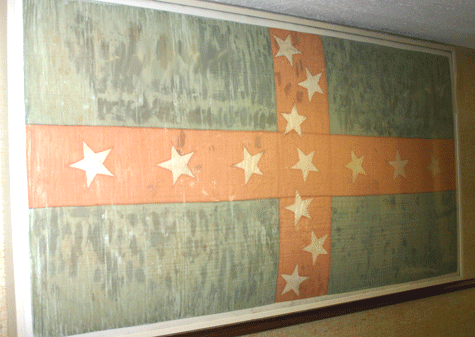 Identified as the "Florida Flag from Shiloh" " This is not from a Florida unit. This is an example of the first pattern of the Polk Corps flags, 45 of which were made in Memphis, TN. January, 1862. They were first issued to the Grand Division at Columbus, KY in early February. We do not know what unit it is from but it is definitely not from a FL unit as there were none at Columbus, KY." -Greg Biggs of Flags of the Confederacy, 6/21/2004 _____ From http://www.confederate-flags.org; 5/28/2014: 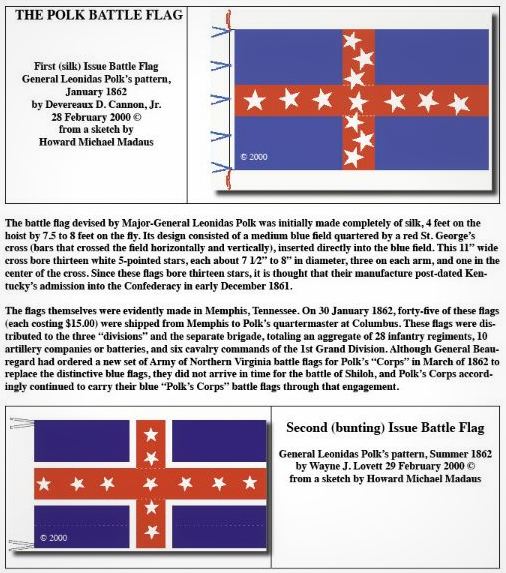
_____  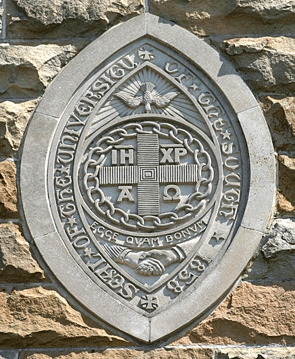 Seal of Leonidas Polk's UNIVERSITY OF THE SOUTH, portico of Jessie Ball duPont Library, once sacred home of the "Anglican Temperance Flag" 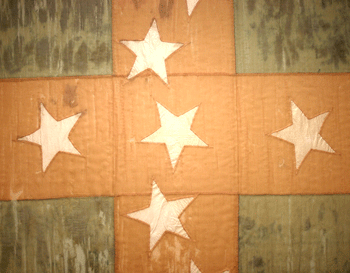 _____  On display during brief Civil War exhibit in Archives of THE UNIVERSITY OF THE SOUTH, Trinity Term, 2013.
 "The Sewanee Constellation of Unity" _____ 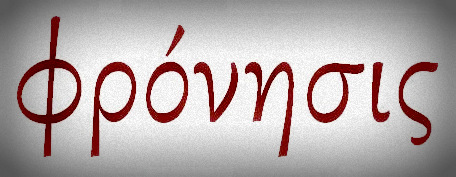
_____
Today... the school's hallways are filled with both boys and girls, and dozens of graduates matriculate each year to some of the country's most prestigious universities. . . . Though Franklin changed over the years, these sites still convey the fundamental ideal important to their original and sustained relevance to the community: the value of personal character as a defining element of southern identity. ____
BATTLE GROUND ACADEMY Founded in 1889 as Battle Ground Academy, named for its location where the Battle of Franklin occurred in 1864, and dedicated in an address by Confederate General William B. Bate, later governor and U.S. Senator, this boys' preparatory school was located on Columbia Avenue across from the Carter house. The school was popularly called the Wall and Mooney School and the Peoples School for its early headmasters. After being destroyed by fire in 1902, it was moved to its present [second] site.
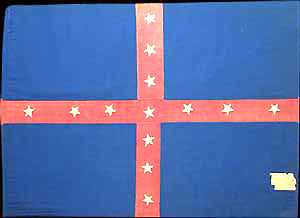 "Not a Polk's Corps flag at all - but a variant of a pattern issued in the Trans-Mississippi theater." -Greg Biggs, 6/21/04 _____ 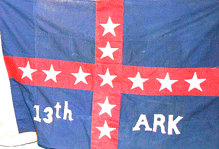 ___________ 16th Tennessee Infantry Polk's Corps Second Issue at the Museum of the Confederacy, Richmond, Virginia 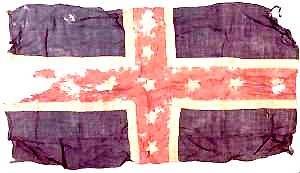 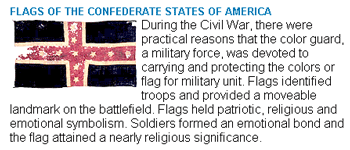 16th Tennessee Infantry (1906.2), which is the Museum's only Polk Pattern battle flag. The flag is believed to have been recovered from the battlefield at Murfreesboro in December 1862 by Daniel W. Adams's Brigade, C.S.A. The flag was found in Richmond, Virginia, in April 1865. In 1906, the flag was transferred to The Museum of the Confederacy by the U.S. War Department. (Sources: Museum of the Confederacy, Devereaux Cannon, Thomas Cartwright, and Greg Biggs) _____ Gregg Briggs on later Polk's Corps flag issues, 6/21/04: Just before the Battle of Shiloh, General Beauregard tried to standardize the battle flags of the Army of the Mississippi. He gave orders to Polk to have the flags of his command changed to those that resembled the Army of Northern Virginia flags. A set of flags for Polk's Corps was made in New Orleans by flag maker Henry Cassidy in February./March of 1862 and sent up to Tennessee, but the shipment got lost. There is some correspondence to this in the Official Records. A second shipment was made but it did not arrive until after the battle. Many units of Polk's Corps switched to the new flag. There are some surviving examples for those of the 4th and 21st Tennessee Infantry. See our CS flags website for pictures and details. After Beaurgeard took sick leave from the army, Polk began to go back to his specific St. George's cross pattern, but with a smaller flag made of wool (the first issues were silk). They also had less stars on them. These start showing up in the late summer of 1862 for new units to the command. We do not know how many of these flags were actually made. In
late 1863, while Polk is operating in the Dept. of Alabama,
Mississippi and East Louisiana, under the overall command of Gen.
Joseph E. Johnston, Johnston starts to standardize the battle flags
of that department. Starting in October, a new type of flag is
issued coming from Mobile flag makers Jackson and Sarah Belknap.
These are rectangular 12 star ANV style battle flags. Polk's Army of
Mississippi receives them in 1864 before they move to Georgia to
fight in the Atlanta Campaign. A number of these flags still survive
today. Please see our CS flags website for pictures and more
information. |
___________
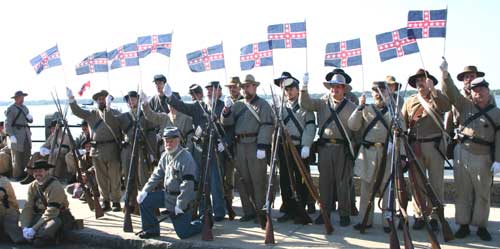
April 17, 2004:
The Battery in Charleston, South Carolina, preceding funeral march procession
for the Hunley Eight; Capt. Pappy Harmon and the 28th Georgia of Resaca, Georgia
(http://www.28thga.org/), including 48th Alabama.
_____
___________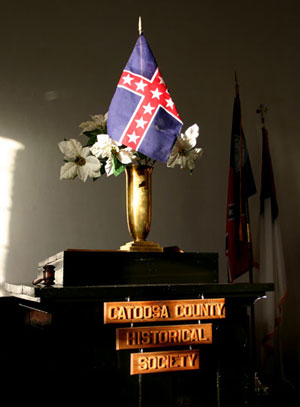
February 5, 2005:
Old Stone Church,
Ringgold, Georgia
___________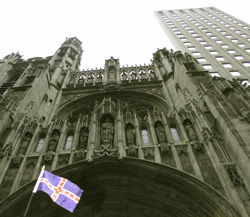
March 6, 2005:
St. Thomas Episcopal
Church,
Fifth Avenue, New York City, New York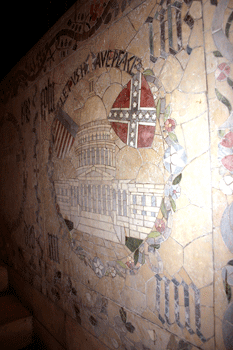
Confederate Battle Flag Shield,
St.
Thomas Fifth Avenue, New York
City
_____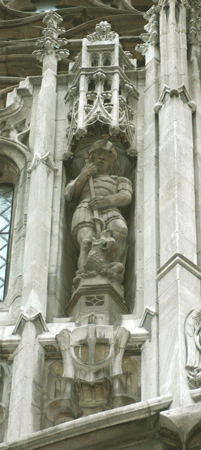
St. George Slays the Evil Dragon;
St.
Thomas Fifth Avenue.
_____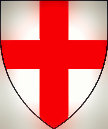
"The legend - in which George slays a
fierce dragon, symbolising evil, and rescues
an innocent maiden from death
- is thought to have appeared as late as the 12th century
and may have
origins in the story of Perseus, who defended the virgin Andromeda against
the monstrous Medusa. To Christians, George is a historical figure, an
archetypal soldier
made famous for tearing down Diocletian's edict against
Christianity. For this act he
is believed to have been beheaded in Lydda,
Palestine (in AD 303),
thus becoming an early Christian martyr."
-From
http://cgi.bbc.co.uk/history/historic_figures /george_st.shtml; viewed
8/9/05
_____
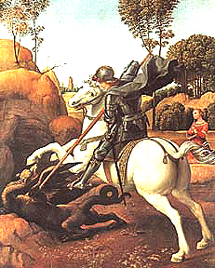 |
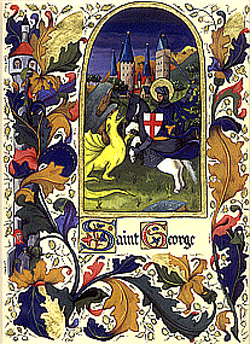 | ||
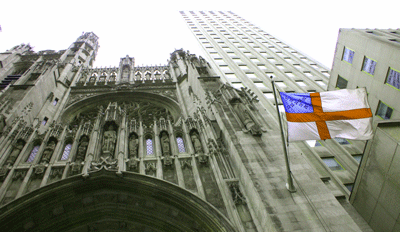 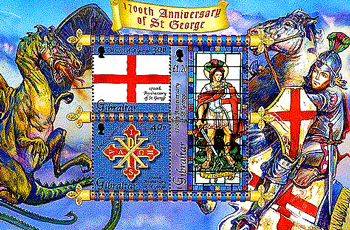
_____
The Cross of St. George at Christ Church, Monteagle, Tennessee | |||
___________
|
_____ "The revisionists are busily rewriting our history and textbooks. To many, the Confederacy is to be eliminated. A concerted effort has been made to change the names of streets, discard monuments, and pretend that the heroes of the Confederacy did not exist. One of the UDC's objectives is to preserve Confederate history for future generations. Truth cannot be denied, and it is our responsibility to see that a true record is preserved. Ignoring the threat is easy, but preserving our history takes effort and dedication. Remember Jefferson Davis' command at " -Mary Moore Williams, Ex-President General, UDC Magazine, Volume LXVIII, Number 3, March 2005 _____ 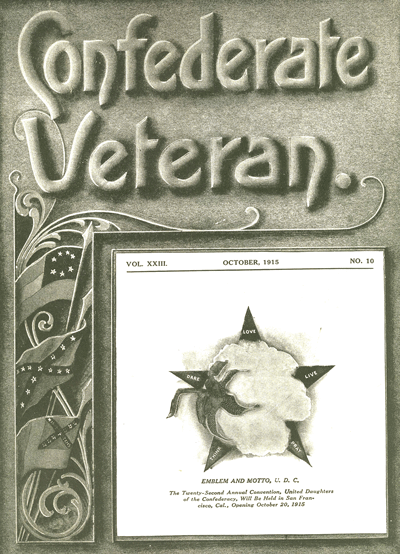 Confederate Veteran, October 1915, Vol. XXIII, No. 10: "Emblem and Motto, U.D.C." "Live, Pray, Think, Dare, Love" _____ "As President-General Rassie Haskins White put it, 'I love the United Daughters of the Confederacy because they have demonstrated that Southern women may organize themselves into a nationwide body without losing womanly dignity, sweetness, or graciousness.' " -Karen L. Cox, DIXIE'S DAUGHTERS, The United Daughters of the Confederacy and the Preservation of Confederate Culture, 2003 _____ 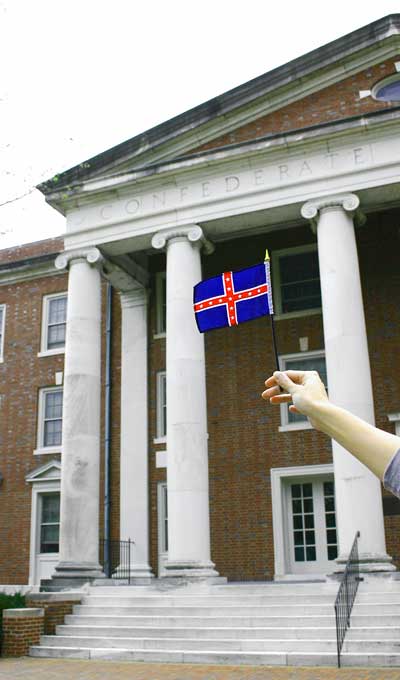 April 6, 2005 _____
|
___________

April 22, 2005:
Monument
to the Unknown Confederate Dead,
Oakland Cemetery; erected by the Atlanta
Ladies Memorial Association, 1894.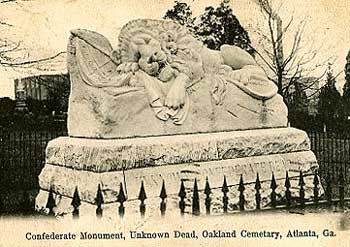
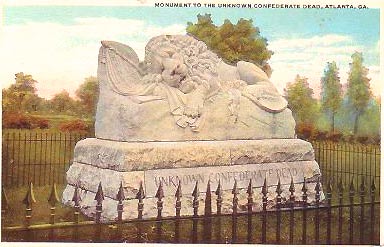
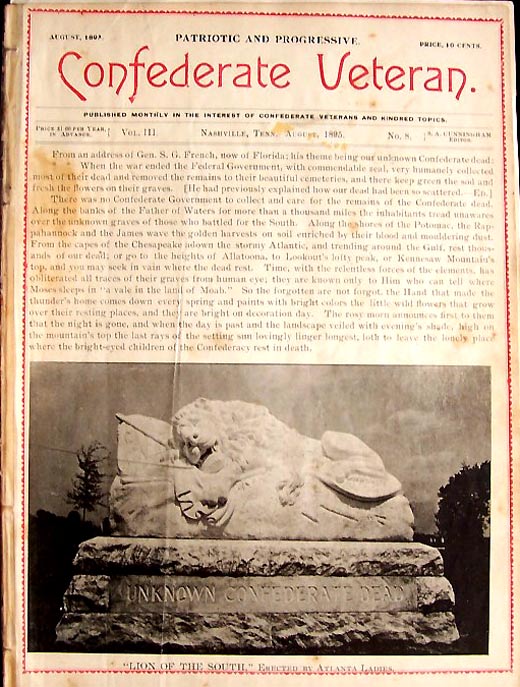
_____ 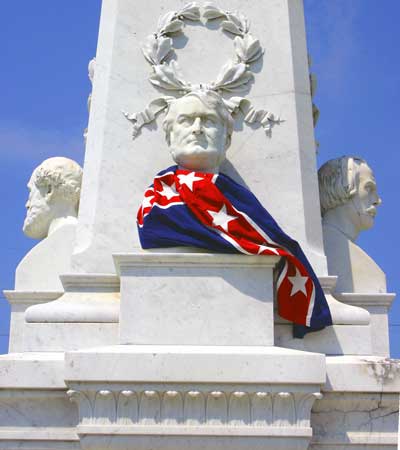
May 7, 2005:
Bishop-General
Leonidas Polk, C.S.A.,
bordered by Generals Robert E. Lee (l) and Albert
Sidney Johnston (r),
Greenwood Cemetery, New Orleans,
Louisiana.
_____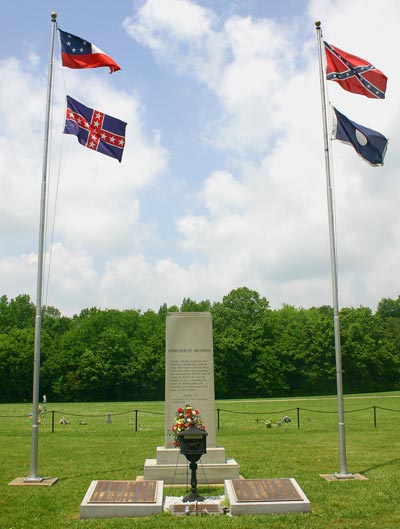
June 4, 2005:
Confederate Memorial at
Cemetery of the Confederate Dead,
Tullahoma,
Tennessee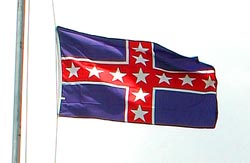
_____
Tennessee Historical Commission marker 2E 44,
Tullahoma: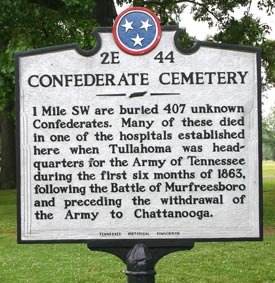
CONFEDERATE
CEMETERY
1 Mile SW are buried
407 unknown Confederates. Many of these died in one of the hospitals
established here when Tullahoma was headquarters for the Army of Tennessee
during the first six months of 1863, following the Battle of Murfreesboro
and preceding the withdrawal of the Army to
Chattanooga.
______
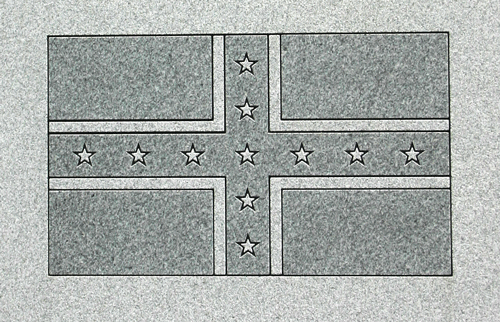
June 4, 2005:
Army of Tennessee
Headquarters monument, Tullahoma, Tennessee
_____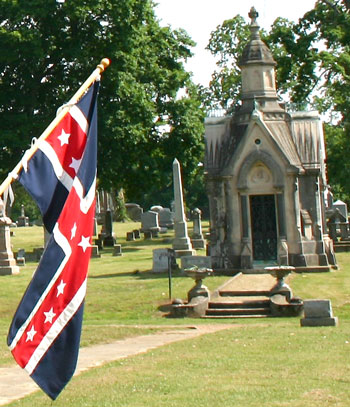
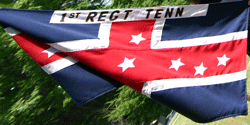
June 5, 2005:
1st Regiment Tennessee
Custom Replica, within
Confederate Circle, Mt. Olivet Cemetery,
Nashville, Tennessee;
courtesy of John Turner.
_____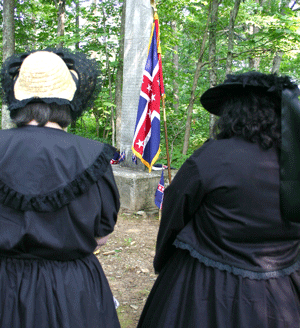
June 25, 2005:
Annual Memorial atop Pine
Mountain.
_____
August 13, 2005:
Confederate Cemetery, Marietta,
Georgia
_____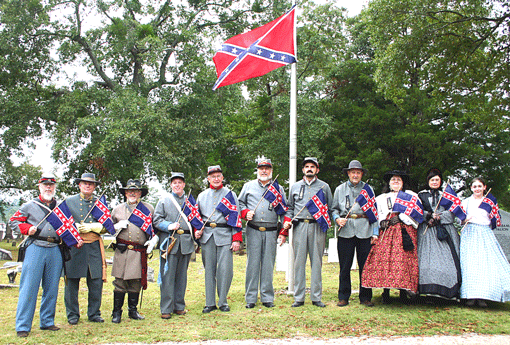
October 8, 2005:
Forrest's Escort and
Haralson Invincibles at Centennial anniversary rededication
of
Gallant
Pelham monument Jacksonville,
Alabama.
_____
Battle of Atlanta
Reenactment, Conyers, Georgia, November 5, 2005: 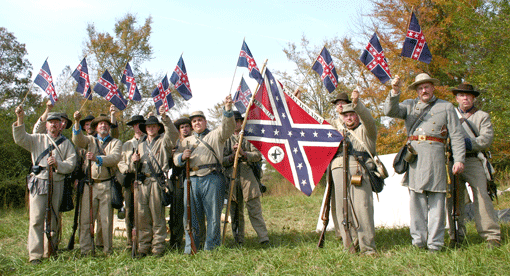
1st Tennessee Infantry Regiment, Company D, Army of
Tennessee
_____
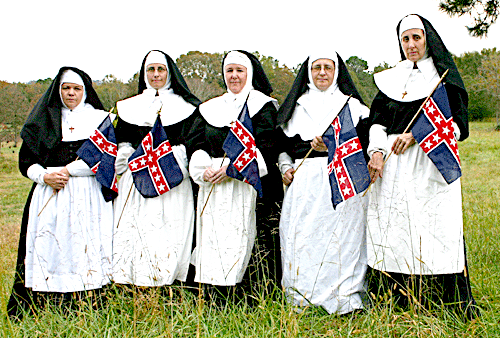
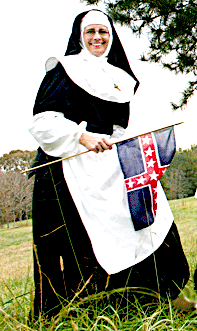 |
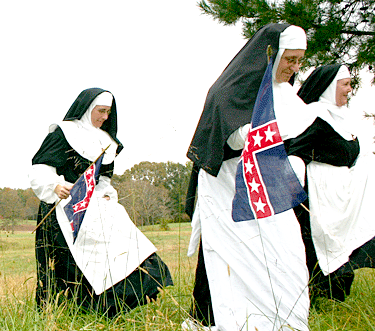 |
_____
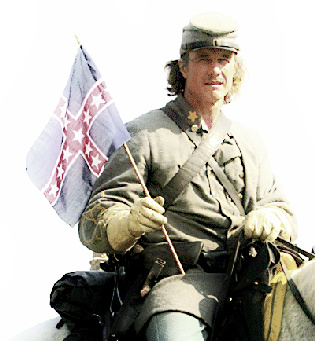 |
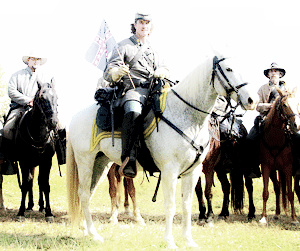 |
___________
|
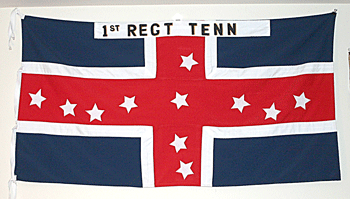 December 3, 2005:1st Regiment Tennessee and 10th Mississippi custom replicas; courtesy of Mr. John Turner, Nashville, Tennessee. 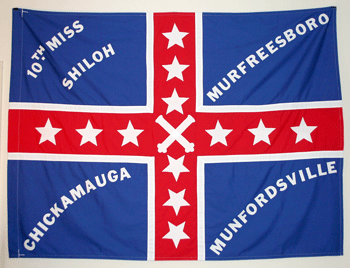 _____
_____ 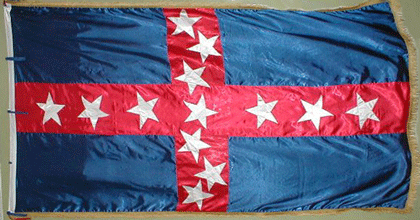 December 12, 2005: Custom replica of THE UNIVERSITY OF THE SOUTH'S "Anglican Temperance Flag" enroute from Dothan, Alabama, to Nashville, Tennessee. | ||||
___________
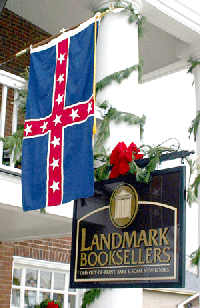 |
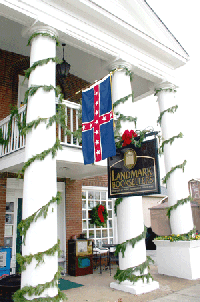 |
December 5, 2005:
Landmark Booksellers, Franklin, Tennessee
___________
|
Courtesy
of Mr. David Fraley of The Carter House, Franklin, Tennessee, December 6,
2005:
_____ 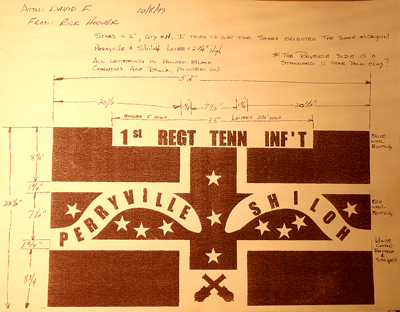
_____
|
___________
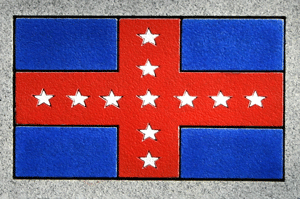
December 7, 2005:
John C. Carter
monument, Winstead Hill, Battle of Franklin,
Tennessee
Commissioned Brigadier to rank from
July 7, 1864. Carter had worked his way up from the rank of Captain by
distinguishing himself with The Army of Tennessee at Shiloh, Perryville,
Murfreesboro & Chickamauga. Taking part in the Atlanta Campaign,
Carter was in temporary command of Cheatham's Division at The Battle of
Jonesboro. Attacking to the left of Gist's Brigade at Franklin, Carter's
Regiments; the 1st, 4th Provisional, 6th, 8th, 9th, 16th, 27th, 28th, and
50th Tennessee were "torn by canister and musketry before they reached the
locust abatis". Carter rode recklessly in front of his Brigade espousing
the "Lead by Example" credo that had come to be the norm in The Army of
Tennessee. Less than 150 yards from the works Carter tumbled from his
horse, shot through the body. Shortly thereafter "His Boys" of the 1st
Tennessee penetrated the Federal Works. He died on December 10, 1864 at
The Harrison House and was laid to rest at Rose Hill Cemetery in Columbia,
Tennessee.
_____
"Pilgrims' Calling
Cards at Sewanee," University Cemetery, December 8,
2005: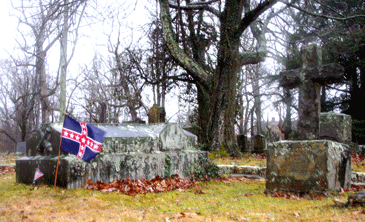
Brigadier-General Francis Asbury Shoup,
C.S.A,
---- 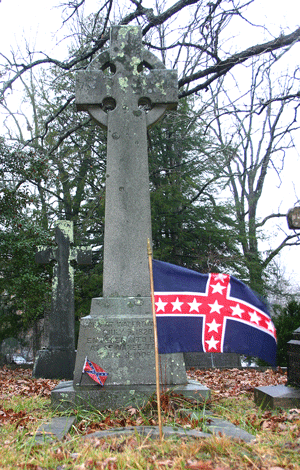
Major George Rainsford Fairbanks, C.S.A.
___________
" You ridiculed her
because of what she said about it; but she spoke the truth. Why didn't you
ridicule the truth instead of her? You didn't, and you won't, because if
you had, you would have made her look better and you look worse. The cause
of truth would have advanced at your expense, because your cause of
hatred, intolerance, and envy would be exposed for all to see. So, what do
you think she'll do next?"
-From THE LAST
CHRISTIAN IN ALABAMA, draft
manuscript
___________

December 11, 2005:
Polk's Battery design
(reunion flag replica, or recent
innovation?)
---
From:
http://www.tngenweb.org/civilwar/csaart/polk.html; viewed
5/29/2014:
CAPTAIN MARSHALL T. POLK'S
TENNESSEE
LIGHT ARTILLERY COMPANY
Also called Company
"G",
Artillery Corps of Tennessee
This company was mustered into Confederate service at Camp Brown, Union City, on August 7, 1861. Individual records show a good many enlistments from" Hardeman County at Bolivar, May 25, 1861.
It was first reported by Brigadier General Charles Clark as being present, without harness, at Union City, on August 5, 1861. On September 7 it was reported at Columbus, Kentucky, in Colonel W. H. Stephens' Brigade. On October 24, still at Columbus, it was reported in Colonel J. Knox Walker's Brigade, Brigadier General Gideon I. Pillow's Division.
On November 7, 1861, at the Battle of Belmont, Missouri, Polk's Battery, along with Jackson's, was sent across the river to reinforce General Pillow. The steamer lost its gangplank in attempting to make the landing, and had to return. Polk's Battery was landed later in the day, but too late to see action.
On March 9, 1862 it was in Colonel Preston Smith's Brigade, Corinth, Mississippi. In the Battle of Shiloh, April 6-7, 1862, it was in Brigadier General Bushrod R. Johnson's Brigade, Major General B. F. Cheatham's Division. It entered the battle with 102 engaged, reported four killed, 18 wounded, two missing. Out of 81 horses in service it lost 30; and out of six guns used, lost two guns and six caissons. One of the missing was Captain Polk, who had his leg broken, and was taken prisoner.
In the morning of the 6th, the 154th Tennessee Regiment, Blythe's Mississippi Regiment, and a section of Polk's Battery were temporarily detached from Johnson's Brigade by General Bragg, and placed on the right. Colonel Preston Smith, of the 154th Tennessee spoke highly of the section of Polk's Battery with him.
He stated that Sergeant Pirtle and Corporal John Kenney could hardly be persuaded to leave their gun after all the horses had been killed, and the gun had to be abandoned. General B. R. Johnson also commended the conduct of the section with him. Johnson was wounded, and Colonel Smith took command of the brigade, bringing the two sections together in the afternoon.
Following
the Battle of Shiloh, since the term of enlistment had almost expired, and
the battery was disrupted by injuries, the loss of its captain, two of its
guns, and all of its caissons, the company was disbanded at Corinth,
Mississippi in April 1862. By comparison of the muster rolls, 23 men from
Polk's Battery were identified as having reenlisted in Carnes' Battery,
and others may have enlisted in other batteries.
___________
The 199th Birthday celebration for General Robert E. Lee, C.S.A.,
Georgia State Capitol, Atlanta, January 19, 2006: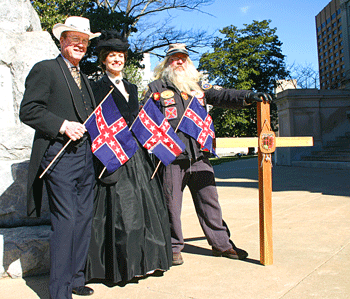
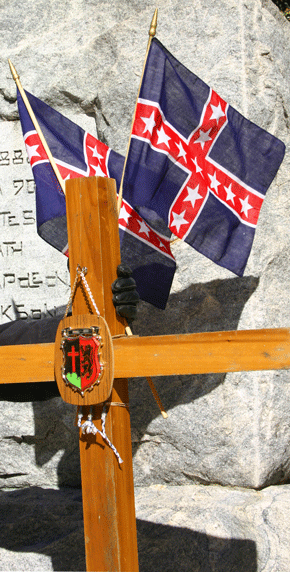
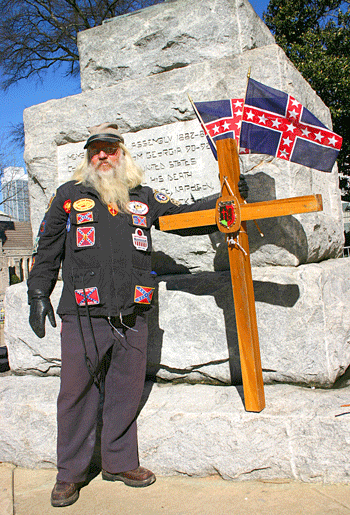
___________
Abraham Cowley's "The Resurrection," in POEMS,
1656:
Not Winds to Voyagers at Sea,
Nor Showers
to Earth more necessary be,
(Heav'ens vital seed cast on the womb of
Earth
To give the fruitful Year a Birth)
Then Verse to Virtue, which
can do
The Midwifes Office, and the Nurses too;
It feeds it
strongly, and it cloathes it gay,
And when it dyes, with comely
pride
Embalms it, and erects a Pyramide
That never will
decay
Till Heaven it self shall melt away,
And nought behind it
stay.
Begin the Song,
and strike the Living Lyre;
Lo how the Years to come, a numerous and
well-fitted Quire,
All hand in hand do decently advance,
And to my
Song with smooth and equal measures dance.
Whilst the dance lasts, how
long so e're it be,
My Musicks voyce shall bear it companie.
Till
all gentle Notes be drown'd
In the last Trumpets dreadful
sound.
That to the
Spheres themselves shall silence bring,
Untune the Universal
String.
Then all the wide extended Sky,
And all th' harmonious
Worlds on high,
And Virgils sacred work shall dy.
And he himself
shall see in one Fire shine
Rich Natures ancient Troy, though built by
Hands Divine.
Whom Thunders
dismal noise,
And all that Prophets and Apostles louder spake,
And
all the Creatures plain conspiring voyce,
Could not whilst
they liv'ed, awake,
This mightier sound shall make
When Dead
t'arise, And open Tombs, and open Eyes
To the long
Sluggards of five thousand years.
This mightier Sound shall make its
Hearers Ears.
Then shall the scatter'ed Atomes crowding come
Back to
their Ancient Home,
Some from Birds, from Fishes some,
Some from
Earth, and some from Seas,
Some from Beasts, and some from
Trees.
Some descend
from Clouds on high,
Some from Metals upwards fly,
And where th'
attending Soul naked, and shivering stands,
Meet, salute, and joyn
their hands.
As disperst Souldiers at the Trumpets call,
Hast to
their Colours all.
Unhappy most, like Tortur'ed Men,
Their Joynts
new set, to be new rackt agen.
To Mountains they for shelter
pray,
The Mountains shake, and run about no less confus'd then
They.
Stop, stop, my
Muse, allay thy vig'orous heat,
Kindled at a Hint so Great.
Hold thy
Pindarique Pegasus closely in,
Which does to rage begin,
And this
steep Hill would gallop up with violent course,
'Tis an unruly, and a
hard-Mouth'd Horse,
Fierce, and unbroken yet,
Impatient of the Spur
or Bit.
Now praunces stately, and anon flies o're the
place,
Disdains the servile Law of any settled pace,
Conscious and
proud of his own natural force.
'Twill no unskilful Touch
endure,
But flings Writer and Reader too that sits not
sure.
___________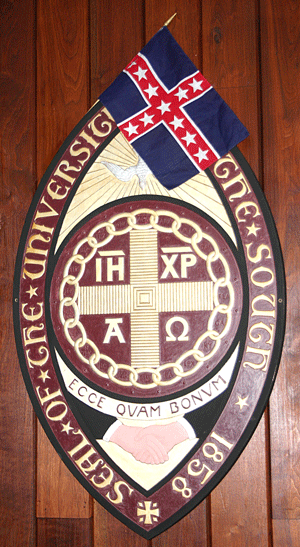
January 27, 2006:
Pilgrim's
Calling Card upon the Great Seal of
Leonidas Polk's University of the
South,
Hearth Room, Sewanee
Inn
___________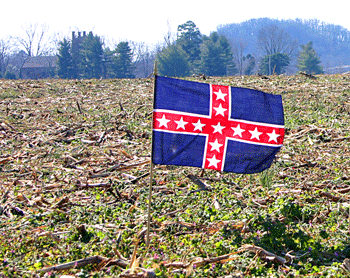
January 28, 2006:
Site of
Rt. Rev. Leonidas Polk's former Ashwood plantation home;
Polk family's
St. John's Episcopal plantation church in upper left background,
Ashwood,
Tennessee.
___________
____________
|
OUR
FALLEN HEROES 1861-1865. 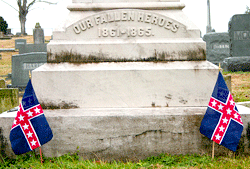 February 2, 2006: Rose Hill Cemetery, Columbia, Tennessee |
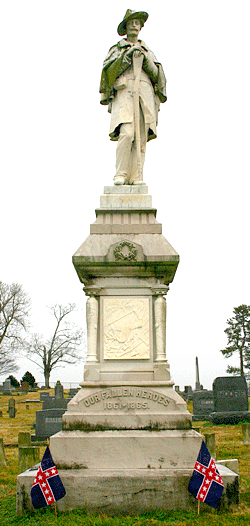 |
___________
From http://elmspringscsa.tripod.com/; viewed 5/29/2014:
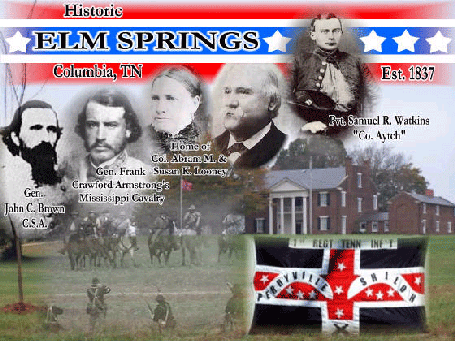
---
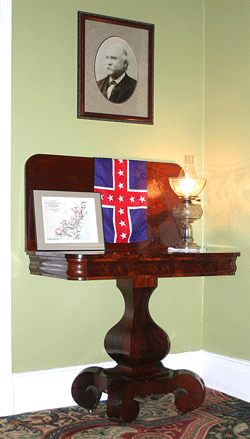 |
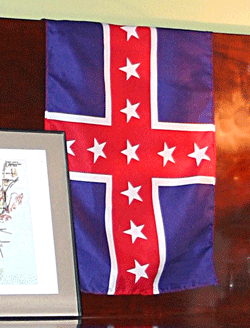 February 2, 2006: Elm Springs, International Headquarters of the Sons of Confederate Veterans, Columbia, Tennessee |
___________
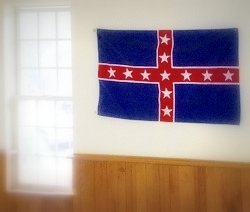
February 3, 2006:
Gentlemen's Private Lodge, Sewanee,
Easter Semester
___________
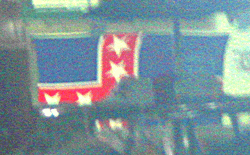
February 4, 2006:
Walker County Regional Heritage Museum,
Chickamauga, Georgia
___________
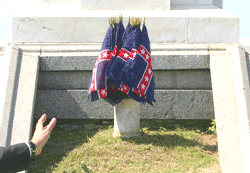
April 10, 2006:
Monument for the Confederate Dead,
Greenwood Cemetery, New Orleans, Louisiana,
during the Leonidas Polk Bi-Centennial,
Easter Semester.
___________
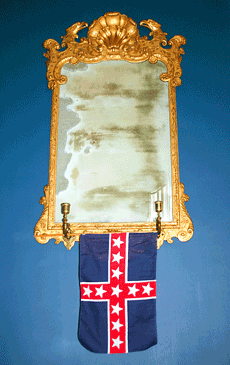
April 13, 2006:
Garden District manse, New Orleans,
Louisiana
___________
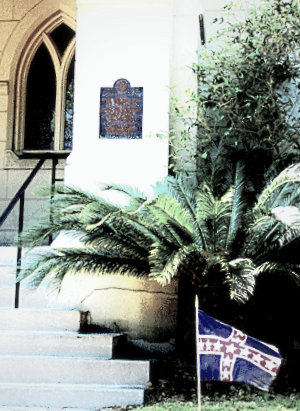
April 14, 2006:
Leonidas Polk Shrine, Christ Church Episcopal Cathedral,
New Orleans, Louisiana
___________
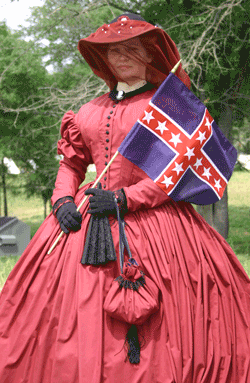
May 20, 2006:
Battle of Resaca Reenactment
___________
___________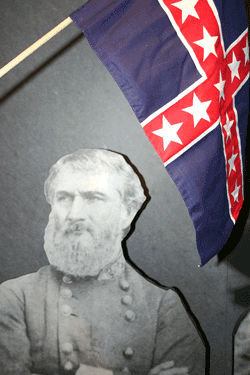
June 14, 2006:
Kennesaw National
Battlefield
___________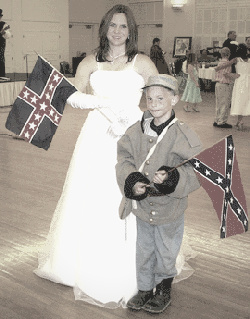
June 18, 2006:
SCV Debutante and Guard,
Gainesville,
Georgia
___________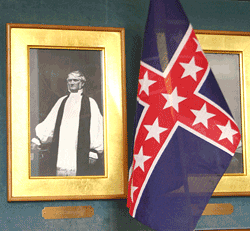
July 4, 2006:
Atlanta
Cyclorama
___________
Nash Farm
Battlefield Dedication and Reenactment, Lovejoy, Georgia, August 20,
2006:
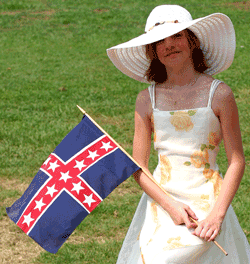 |
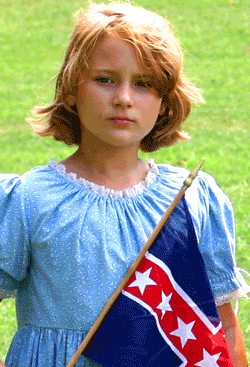 |
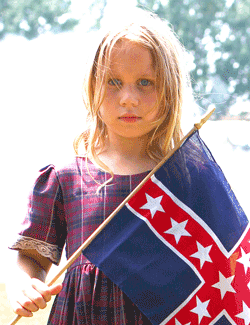 |
___________
Battle of Tunnel Hill
reenactment, September 10, 2006:
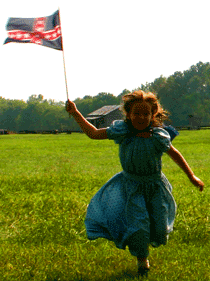 |
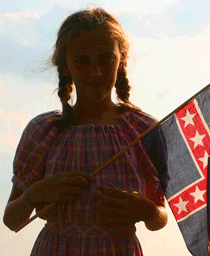 |
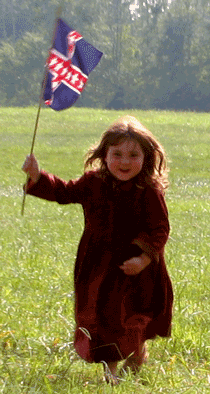 |
___________
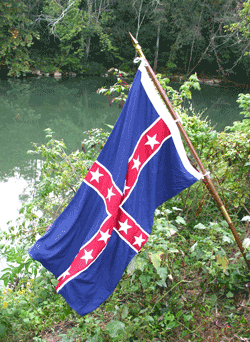
October 3, 2006:
Calf Killer River, Sparta, Tennessee
_____
"Sept. 3, [1862]. Moved forward 13 miles arriving at Sparta and encamped on the River Calf-Killer one and one quarter miles from Town. Sept. 4, [1862]. Remained in camp at Sparta. Sent out Battle Flags for the 1st Division Right Wing Army of the Mississippi."
-Marcus Wright, "The March from Chattanooga into Kentucky," DIARY OF BRIGADIER-GENERAL MARCUS J. WRIGHT, C.S.A.
___________
Battle of Perryville National Reenactment, October 7-8, 2006; in the Sesqui-Centennial Anniversary Month of Bishop Leonidas Polk's independently leading Southern Bishops to inaugural meeting in Philadelphia (per National Convention) for establishing his proposed Southern University, Advent Semester:
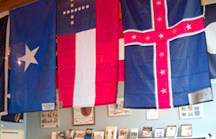 |
||
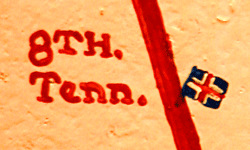 |
|
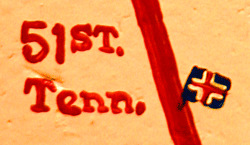 |
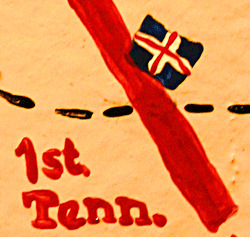 |
|
|
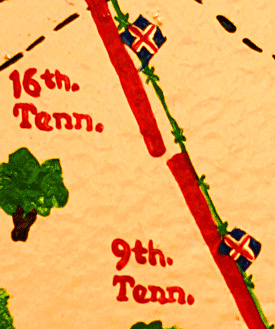 |
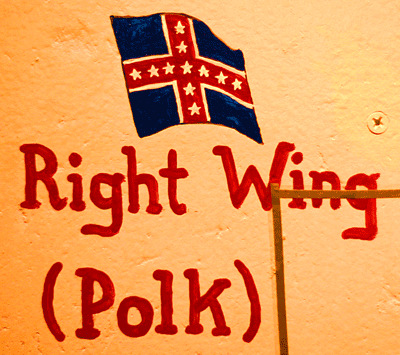 |
|
|
| ||
|
|
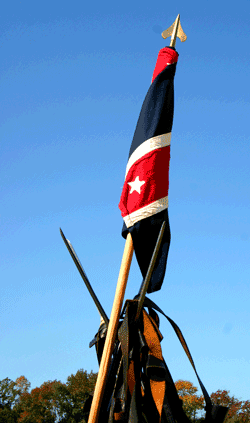 |
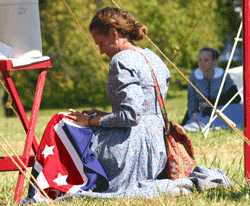 |
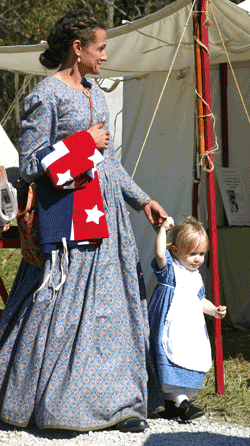 |
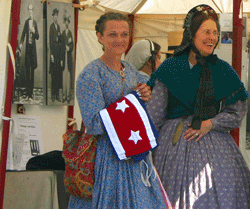 |
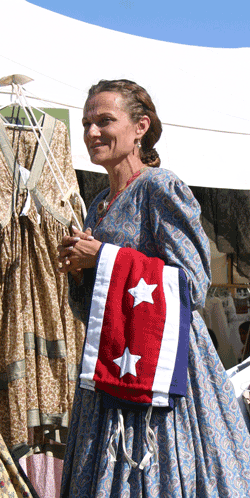 |
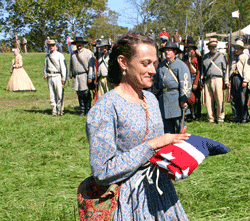 |
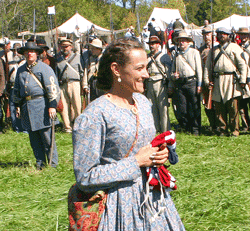 |
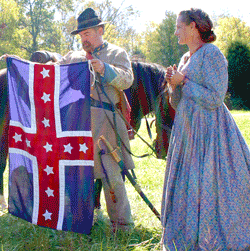 |
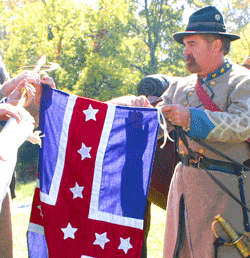 |
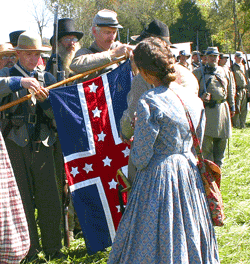 |
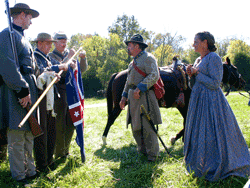 |
|
|
|
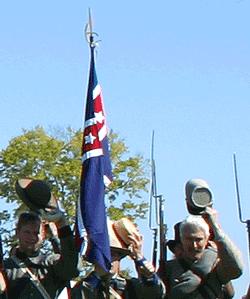 |
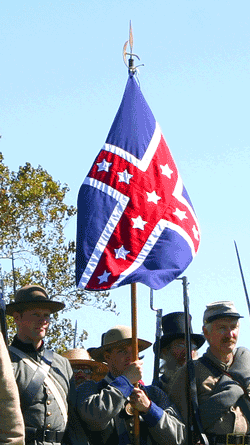 |
|
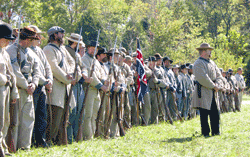 |
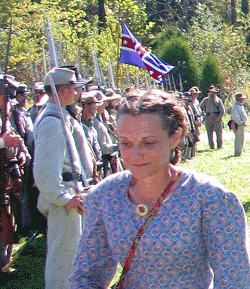 |
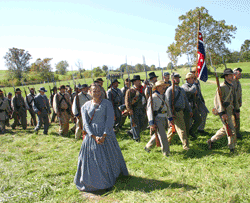 |
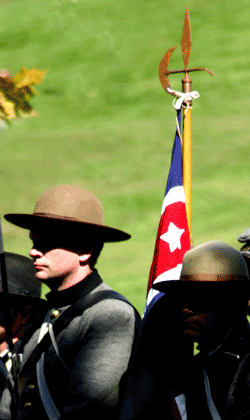 |
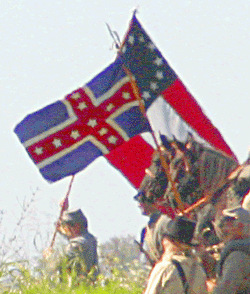 |
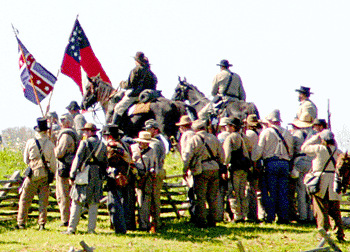 |
|
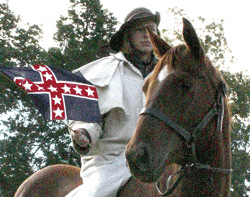 |
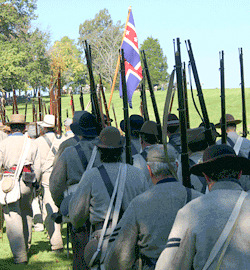 |
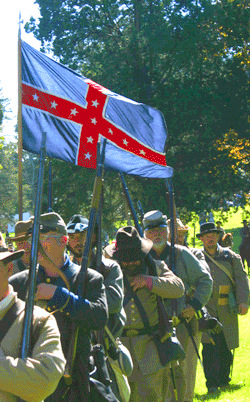 |
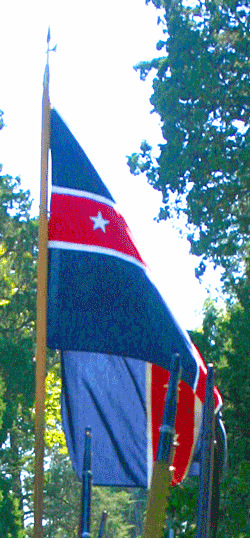 |
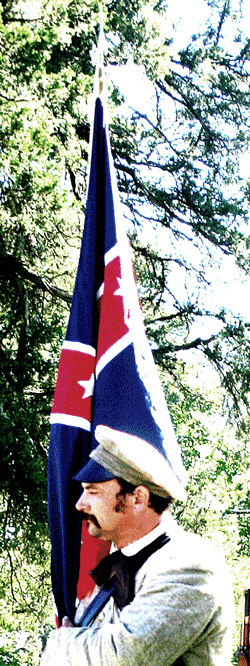 |
|
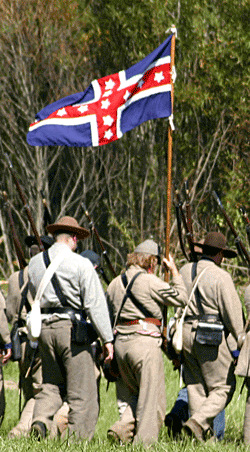 |
|
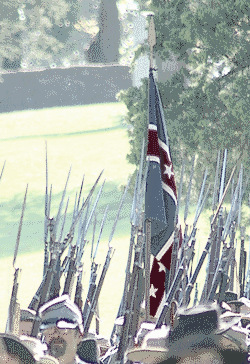 |
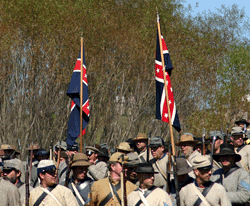 |
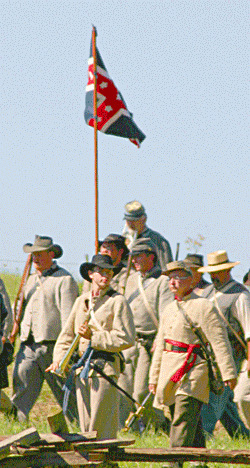 |
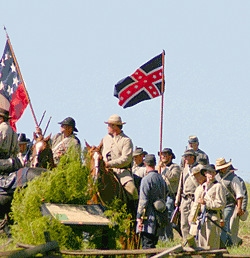 |
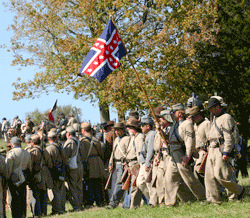 |
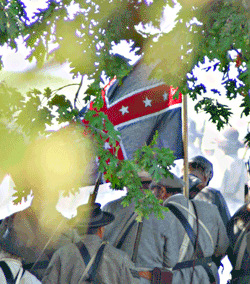 |
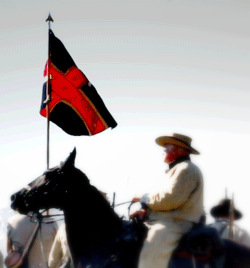 |
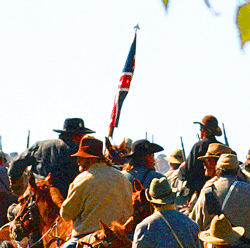 |
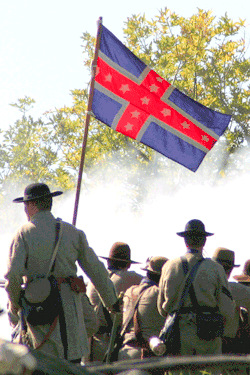 |
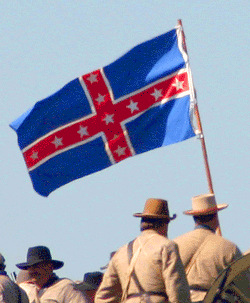 |
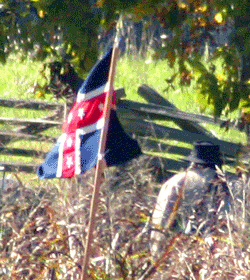 |
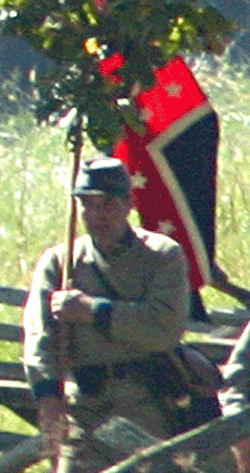 |
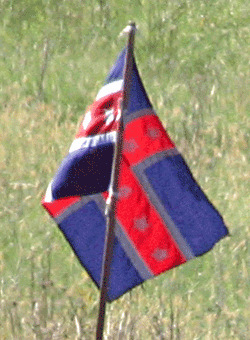 |
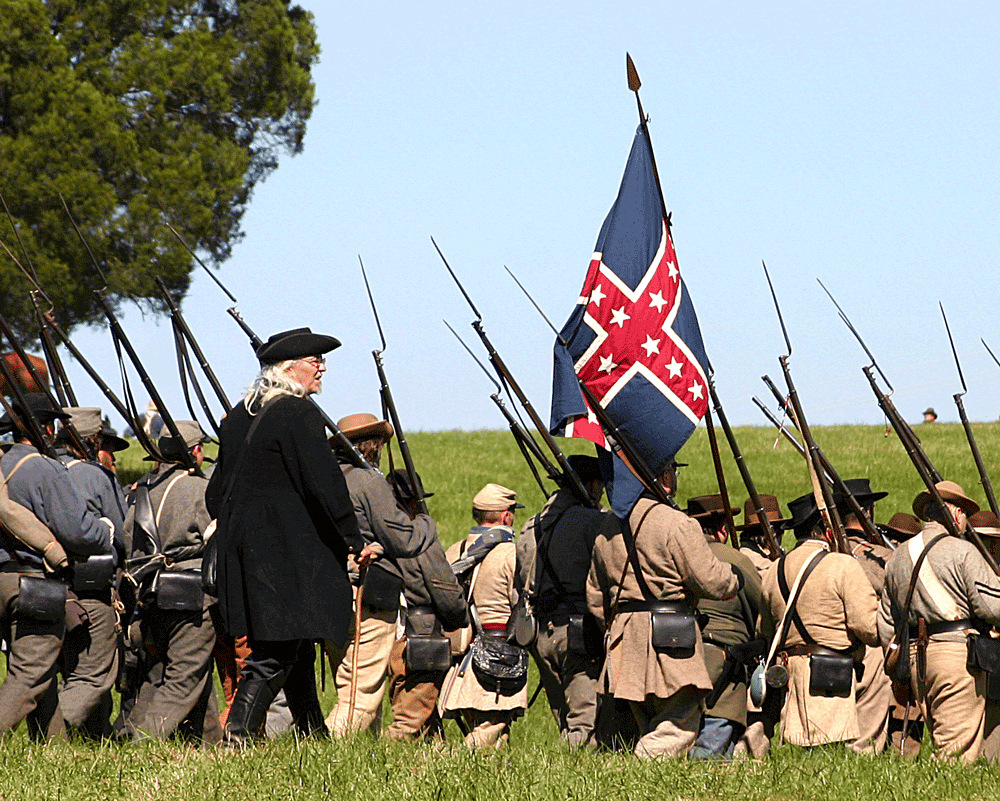 | ||
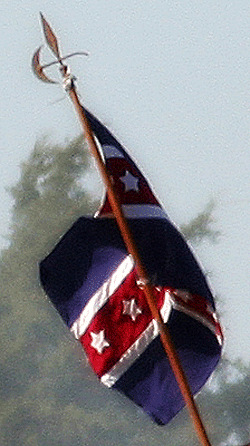 |
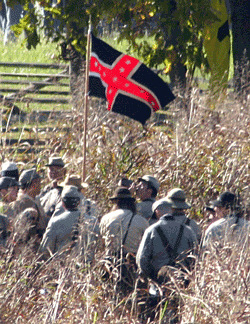 |
|
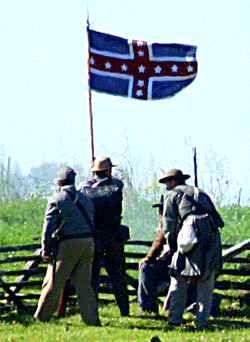 |
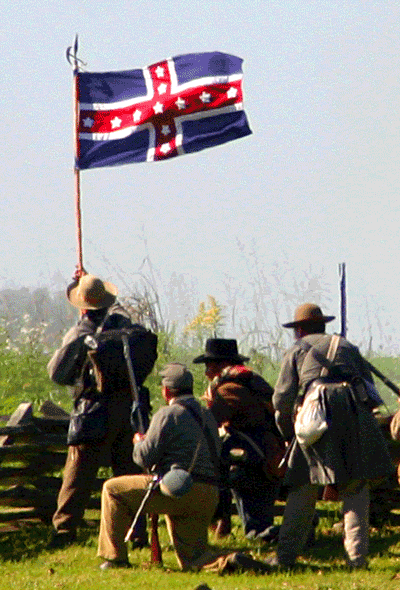 | |
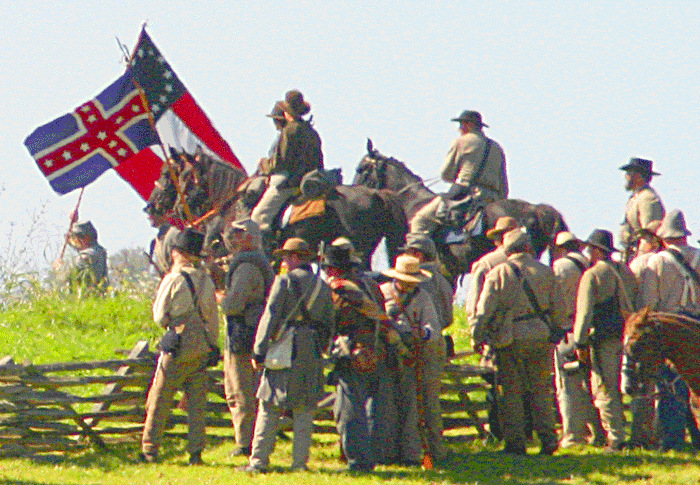 |
 |
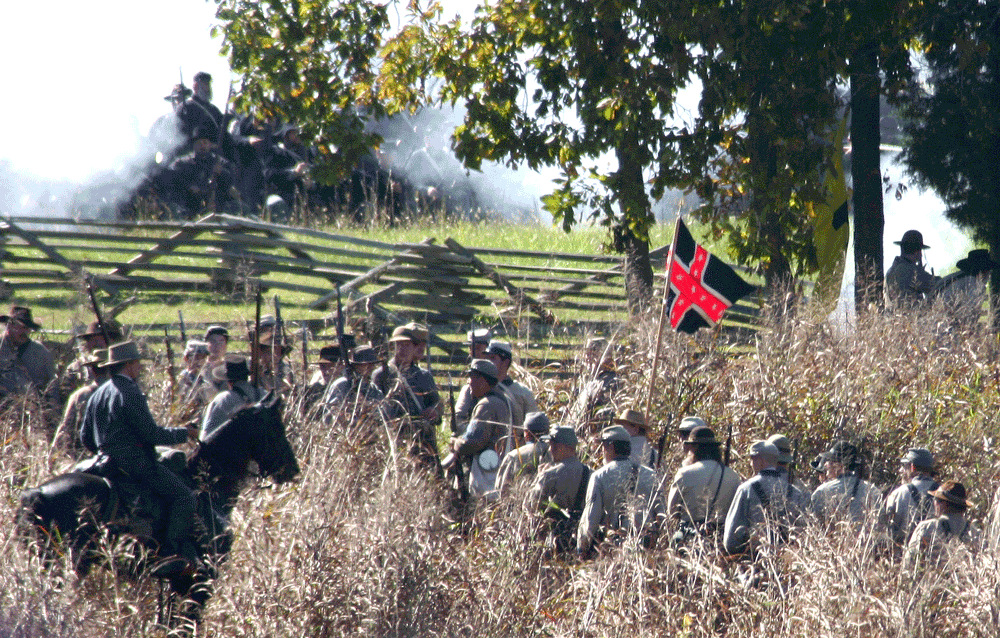 |
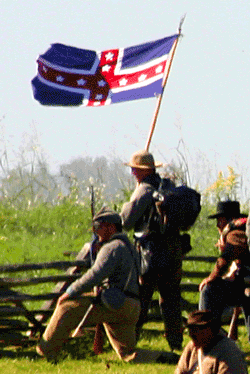 |
|
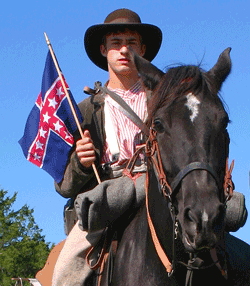 |
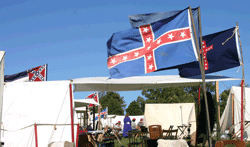 |
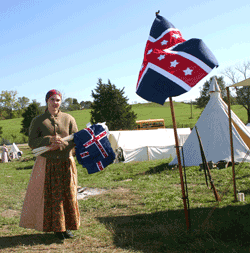 |
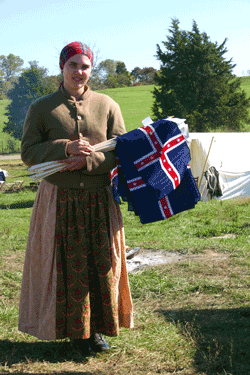 |
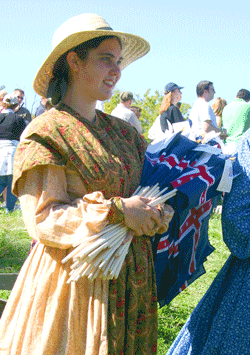 |
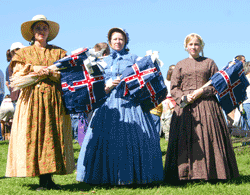 |
|
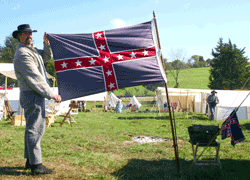 |
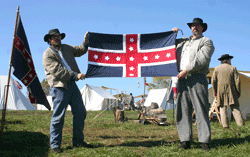 |
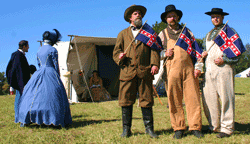 |
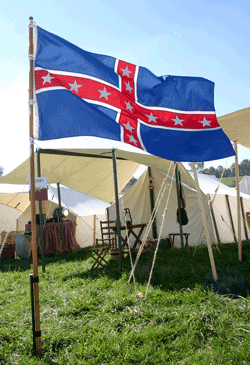 |
|
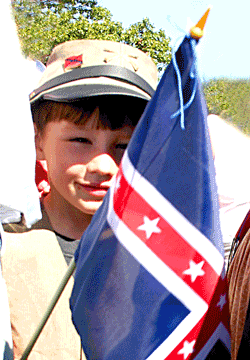 |
 |
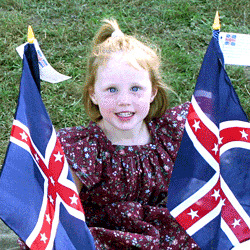 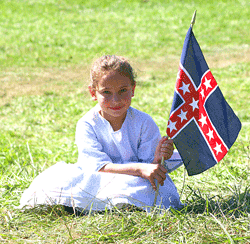 |
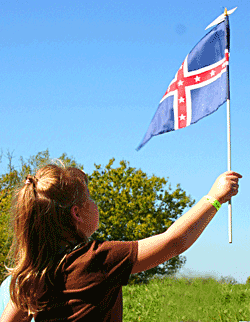 |
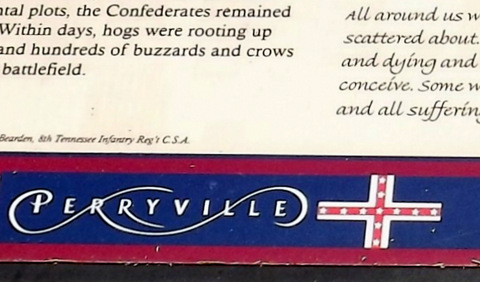
__________
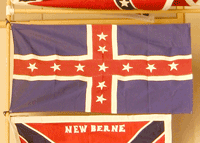
October 11, 2006:
Chattanooga, Tennessee
___________
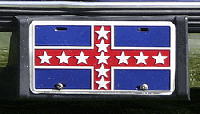 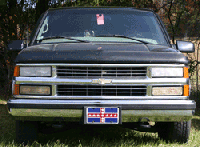 November 4, 2006: Missionary Ridge Reenactment, Sequoyah Caverns, Valley Head, Alabama |
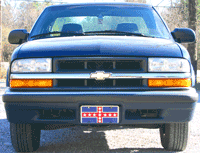 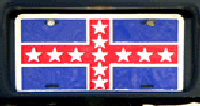 December 9, 2006: On the Domain, Sewanee Village |
June 16, 2007:
___________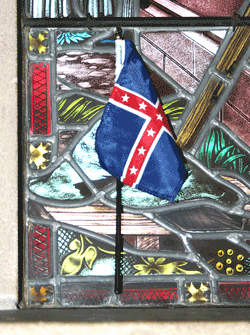
December 10, 2006:
All Saints' Chapel
Narthex at Leonidas Polk's
University of the South; wonderfully
courageous Order of Gownsmen member,
serving as a Chapel usher and
exhibiting meritorious instinct and exquisite taste,
insisted was example
of the University flag, Advent Semester.
___________
"But
if we abandon the concept of the fixed cycle and say rather that man lives
by his myth, by a projection of ideals, sentiments, and loyalties, which
constitute the world of truth- not the world of nature- then the
conservation of the pattern becomes obligatory, and the underminers of the
faith and the mockers of the vision deserve the obloquy which has
traditionally been theirs."
-Richard M.
Weaver, SOUTHERN TRADITION AT BAY, 1968, 1971,
1989
___________
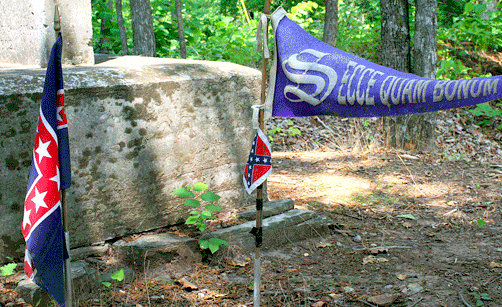
General Polk
Monument, Pine Mountain, Kennesaw,
Georgia
_____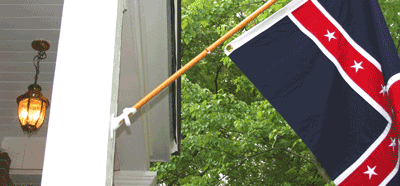
Consecrated Bishop
Polk Banner,
St. Hilda's of Whitby Anglican-Catholic
Church,
Atlanta, Georgia
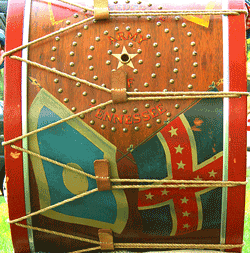
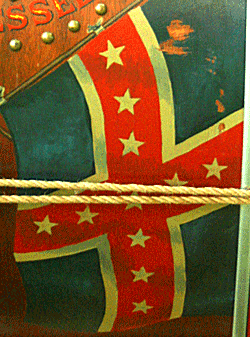
___________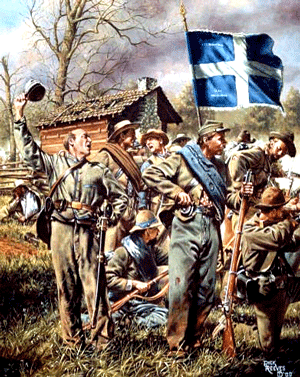
"Alabama Valor, Dixie Pride," by Rick
Reeves
(Source: www.americanahistoricalart.com/
civil_war.html)
22d Alabama Infantry's Polk pattern
variant, Wither's Division, 1863;
(Source:
http://www.confederateflags.org/army/FOTCaotm.htm#polk; viewed
12/11/05)
_____
From
http://ehistory.osu.edu/uscw/features/regimental/alabama/confederate/alarty.cfm;
viewed 12/14/05: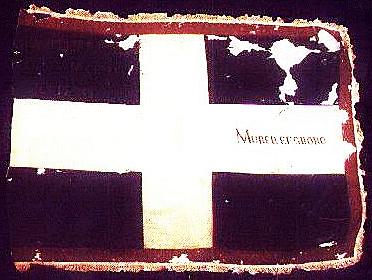
Waters' Artillery Battery,
Company "B," 2nd Light Artillery Battalion
This command was organized at Mobile on 16 October 1861, with men and officers were from that city mustered in on the 31st. The battery remained in the defence of that city until the spring of 1862 when it moved to Corinth. It was in the Kentucky Campaign losing lightly at Munfordville, and none at Perryville. It suffered severely at Murfreesboro, where it was in Manigault's brigade. At Chickamauga, the battery was engaged without loss; but at Missionary Ridge it lost three guns, and half its force was captured. The other half were distributed in Cobb's (KY) and Mayberry's (TN) battery (January 1864), and served till the end.
Officer:
Capt. David Waters (promoted); Lts. William Hamilton; Charles Watkins;
Samuel Battle; James M. Muldon (resigned); and Turner.
___________
|
"The North still sits in
Pharisaical judgment upon the South, beating its chest and
thanking-Thee-O-Lord-that-I-am-not-as-other-men and imposing its
philosophy of living and life upon the South. The South, confused,
ill informed because taught by an alien doctrine so long,
unconsciously accepts portions of the Northern legend and
philosophy; sullenly and without knowing why, it rejects other
portions, and withal knows not where to turn." -Frank Lawrence Owsley, "The Irrepressible Conflict," I'LL TAKE MY STAND: The South and the Agrarian Tradition; Twelve Southerners, including Andrew Lytle, 1930, 1962, 1977 |
___________
|
From THE LAST CHRISTIAN IN
ALABAMA, draft manuscript: |
___________
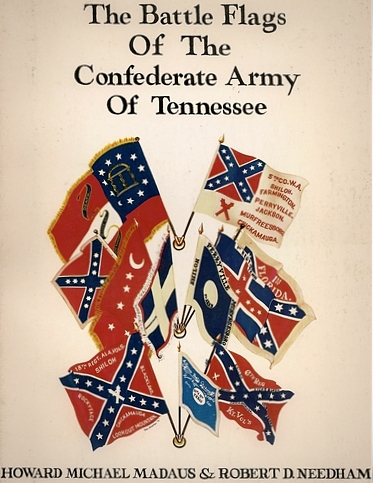
___________
April 10, 2011:
Fifth Anniversary Commemoration of Leonidas Polk's Bi-Centennial in
New Orleans,
fulfillment of John S. Preston's Sewanee Cornerstone Prophecy,
and Founding
of the
Leonidas Polk Memorial Society at
Christ Church Episcopal Cathedral Shrine;
celebrated at St. Hilda of Whitby, Atlanta, Georgia:
_____
June 16, 2012:
Pine Mountain, Kennesaw, Georgia:
_____
July 5, 2012:
Columbus-Lowndes Public Library, Columbus, Mississippi:
_____
September 24, 2013:
Tennessee Welcome Center and Rest Area, Interstate 75, Chattanooga:
_____
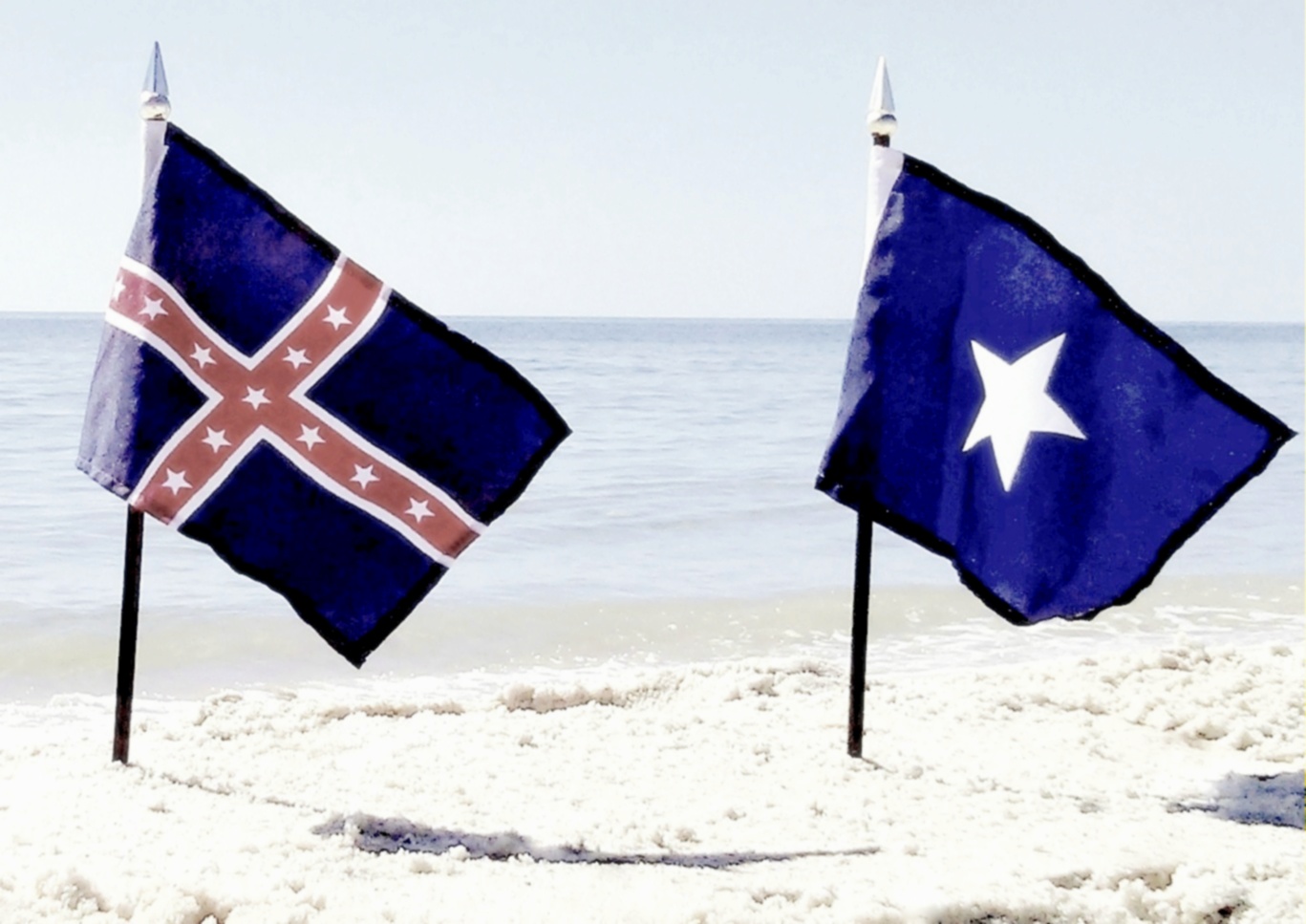
February 17, 2014:
Saint George's Island,
Florida;
transitioning from Katabasis to
Anabasis,
Olustee-Okolona-Mountain Brook Pilgrimage,
Easter
Semester.
_____
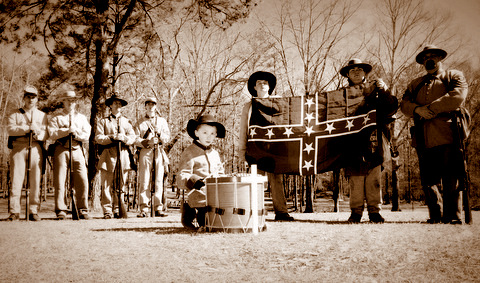
February 22, 2014:
Company E,
33rd Alabama Volunteer Infantry
of Wetumpka, Tannehill Ironworks,
Alabama
_____
May 17, 2014:
Battle of Resaca 150th Reenactment,
Easter Semester:

---


_____

May 31, 2014:
Pickett's Mill Battlefield Historic
Site
___________
(Source:
http://hardeesguard.wikispaces.com/;
viewed 6/10/2014)
___________
June 14, 2014:
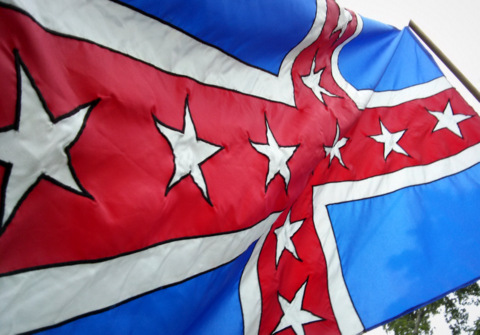
Pine Mountain
---
Mark Kirk House at Old Hardage, Kennessaw;
General Polk's Headquartering and KIA Sesqui-Centennial,
Trinity Term.
___________
(Source: http://christiansofthesouth.blogspot.com; 7/4/2014)
___________
From http://saveourflags.org/index.php/aboutthisflag; viewed
5/21/2014:
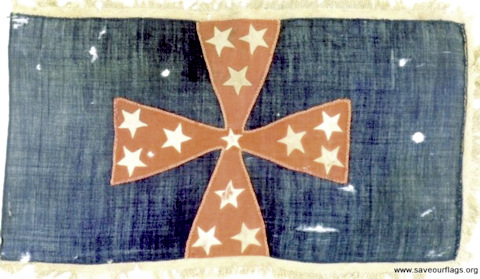
General John Adams' Headquarters Flag
Save Our Flags is proud to announce that our next Confederate
flag conservation project is the headquarters flag of Brigadier General
John Adams, who was killed at Franklin while attempting to cross the
federal works. This flag may be a one-off, and there has been debate as to
whether it's a Polk Corps variant, perhaps something based on a
Trans-Mississippi pattern, or maybe even a type of Maltese Cross. We would
love to hear from anyone who knows more about this flag, its creation, and
its use. It's wool and silk, and is a priority of conservation primarily
because the silk fringe has begun to deteriorate more than expected over
the past
decade.
___________
From THE LAST CHRISTIAN IN
ALABAMA, draft manuscript:
He was harassed by the
administration because of a few true (but therefore"insensitive") comments
he made in class about the trajectory of social change on the Mountain.
His
response was so spot on, they left him alone for a while and began
plotting in secret.
He told them without the slightest hesitation: "Well, let me be the
first to tell you a little something about Sewanee that you may not
yet know.
One of the burdens carried by these families
who have been involved with and supportive of The University of the
South since the laying of the Cornerstone is finding within ourselves
the
required toleration of all the new people who come up here and tell
us how we are supposed to think about the Mountain's history, which
is our history. We're quite practiced at it by now, because
newcomers, even when they don't feel at home here, just won't stay away or
go back where they came from.
Then he made the point that left
them speechless, again, and seething. He said, "But today, as of yet,
I've not had my forced exercise in tolerance. That must be why you
are here,
so
please, do tell me how I'm supposed to think about
Sewanee today. I am eager for the instruction and my heart anticipates
the advice. I just hope it's as good as rules you gave to the Freshmen
at your
latest required "Building Up a New Sewanee for a Better Tomorrow" seminar.
Is it really true you had to prune a few "uncooperative" alumni from
the Parents' Council list after
that?
___________
As a non-profit
educational fair use web site, images and citations reproduced herein
from other sources are intended solely for scholarship, research, and
community
interest. (See TITLE 17, CHAPTER 1, §107: Limitations on exclusive
rights: Fair use.)
Advertisements and click-through purchases support a small portion of our increasing technology and maintenance expenses. Thank you for helping us onward toward even more improvements and greater offerings.
©2003-2014 The Leonidas Polk Memorial Society (as successor); All Rights Reserved.
Contact: info@leonidaspolk.org
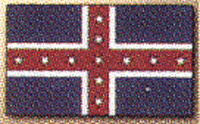

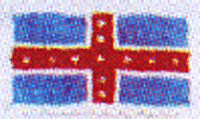
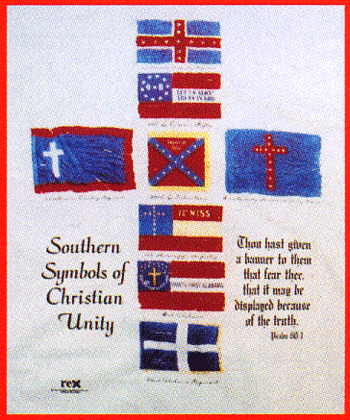
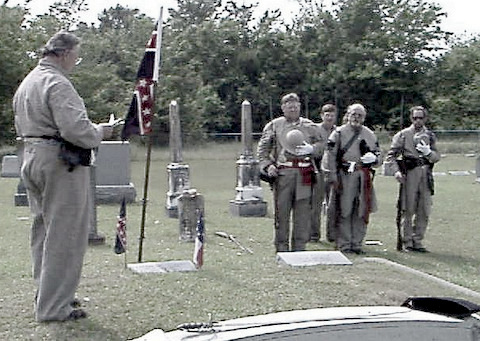
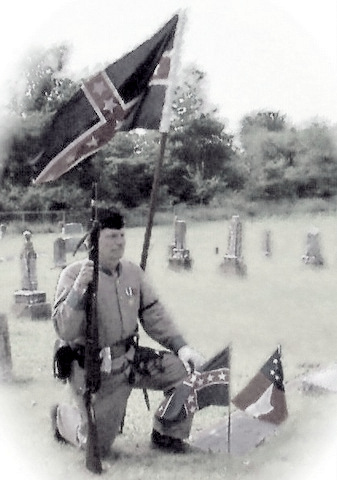
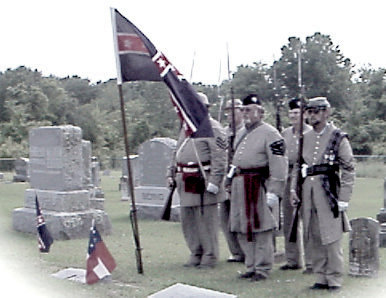
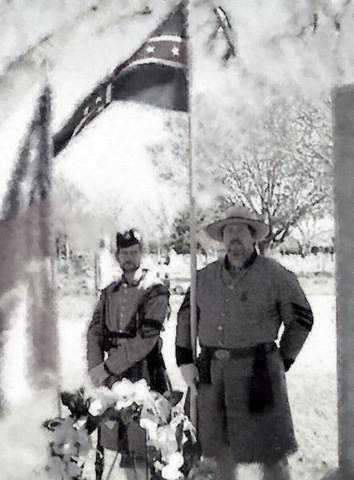
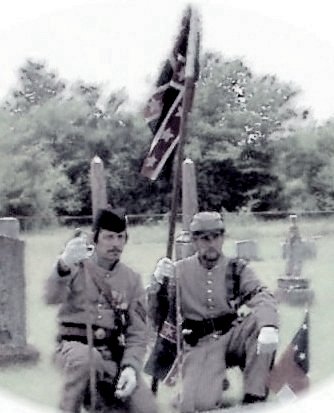
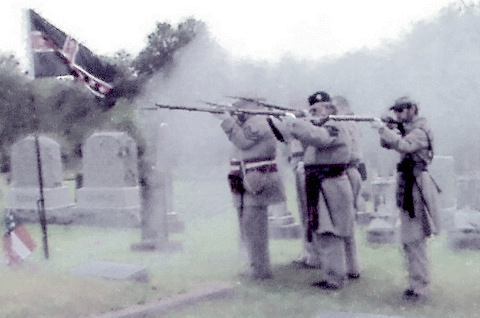
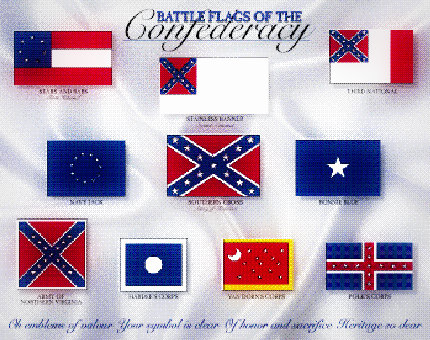
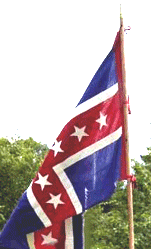
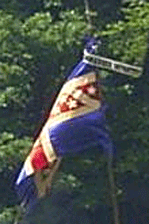
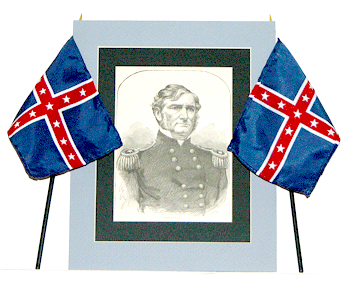
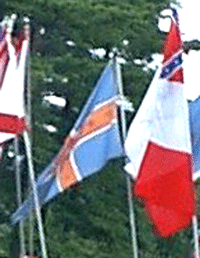
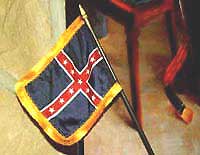
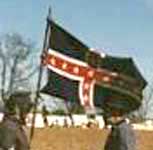
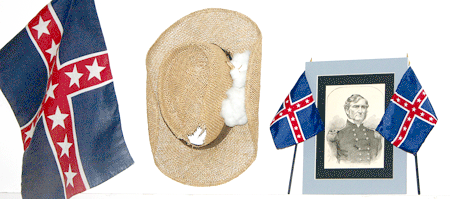
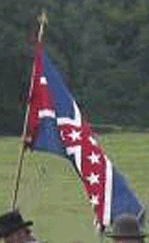
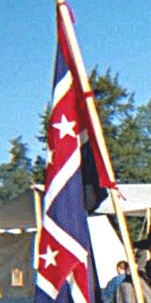


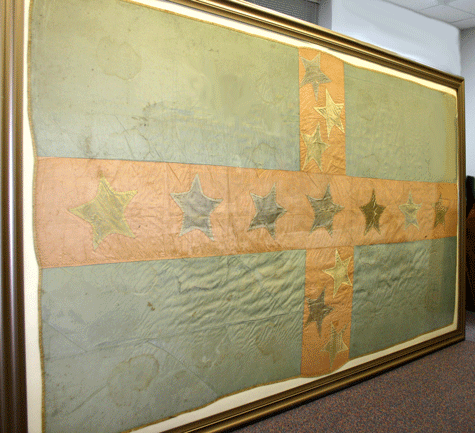
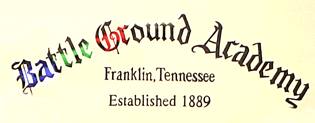
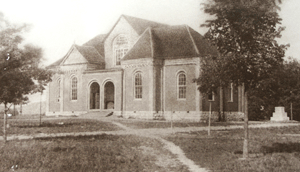
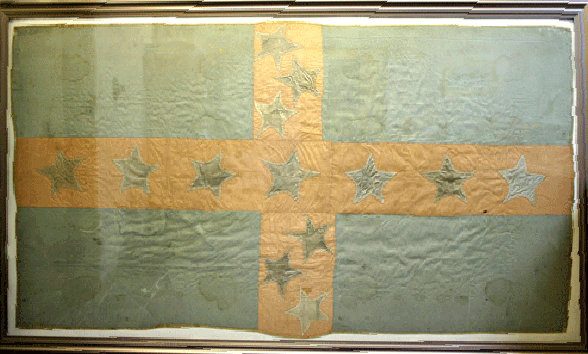
.gif)

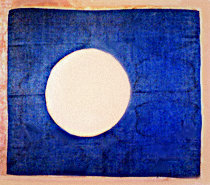
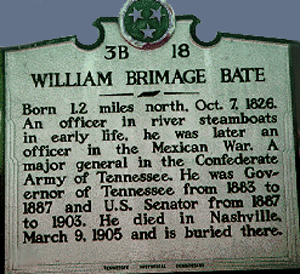
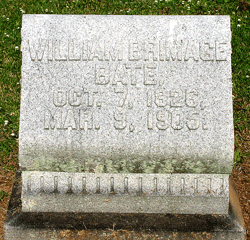

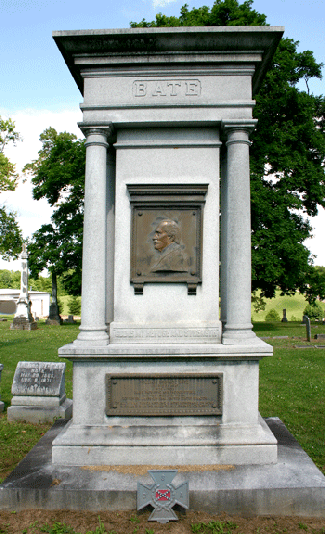
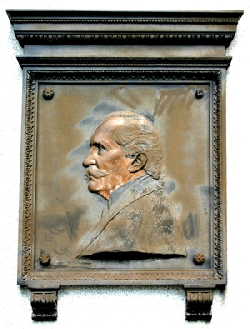
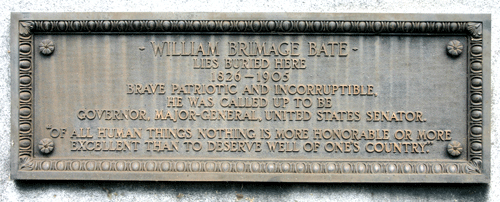
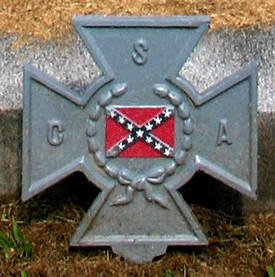
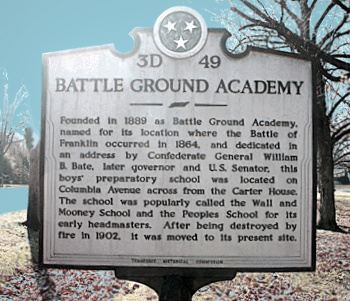
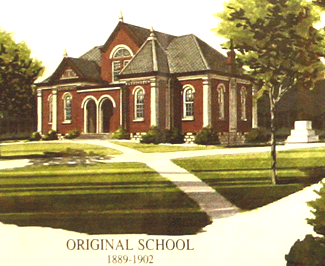
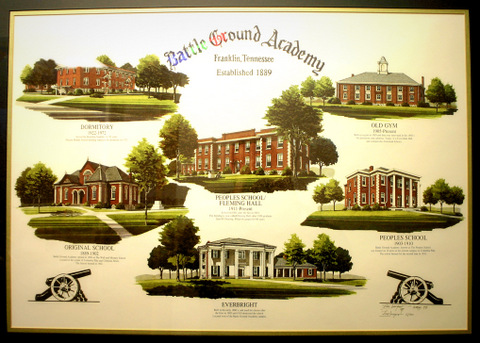
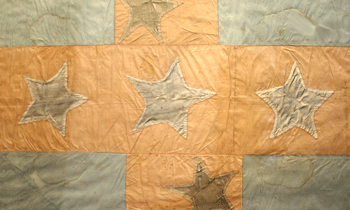
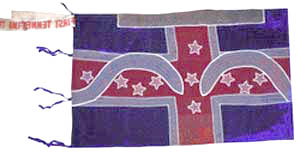
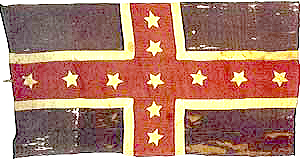
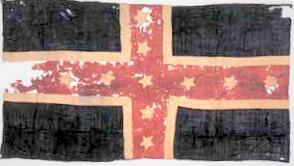
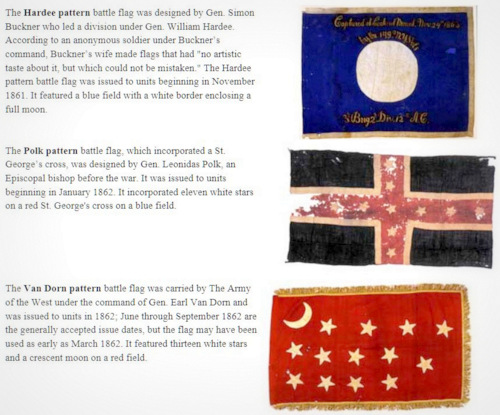
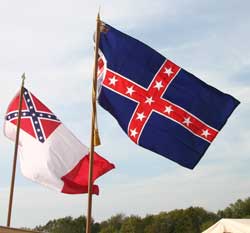
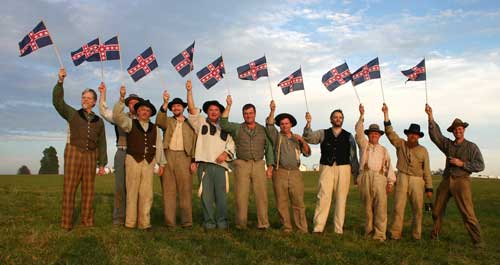
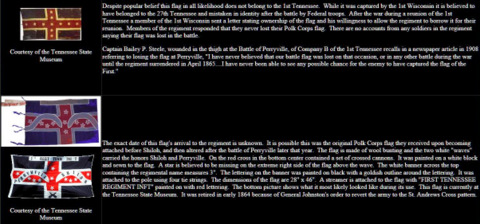
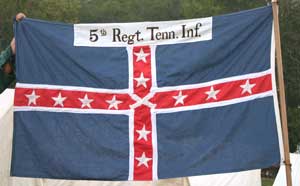
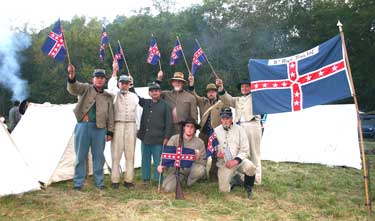 O
O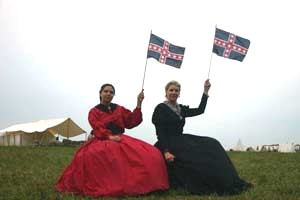
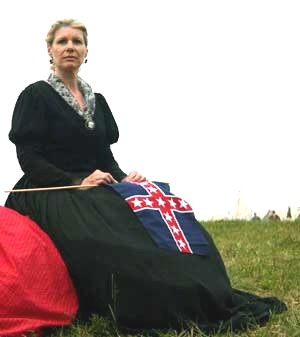
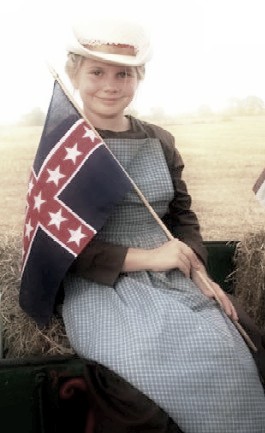
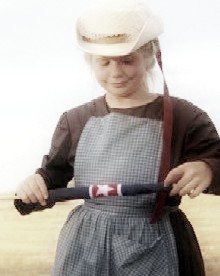
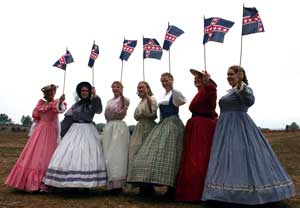
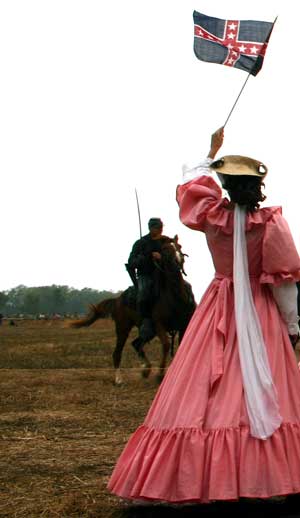
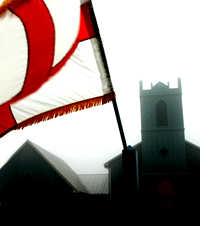
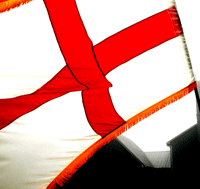

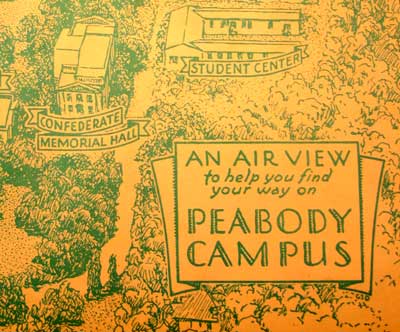
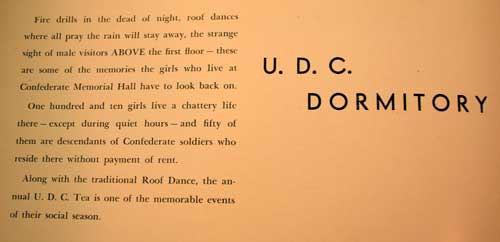
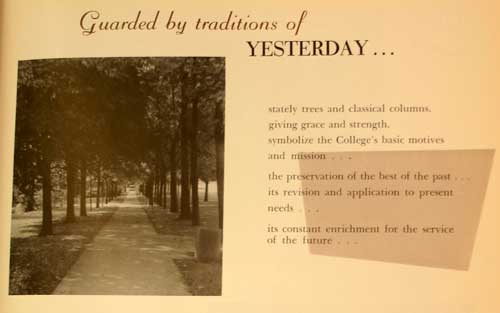
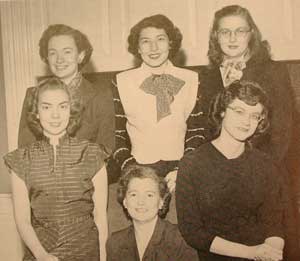
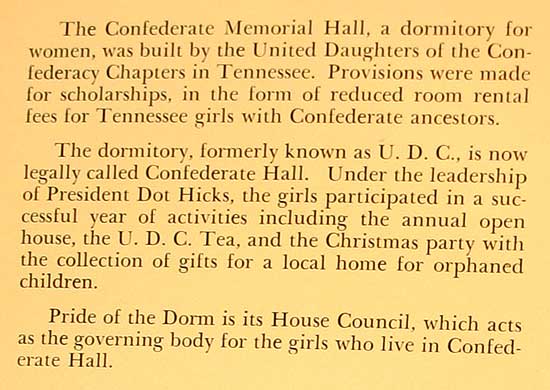
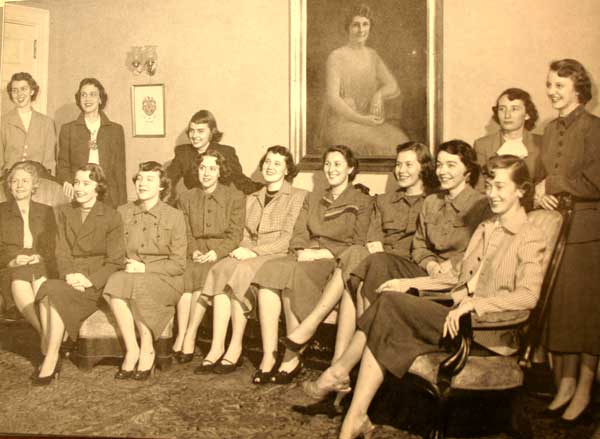
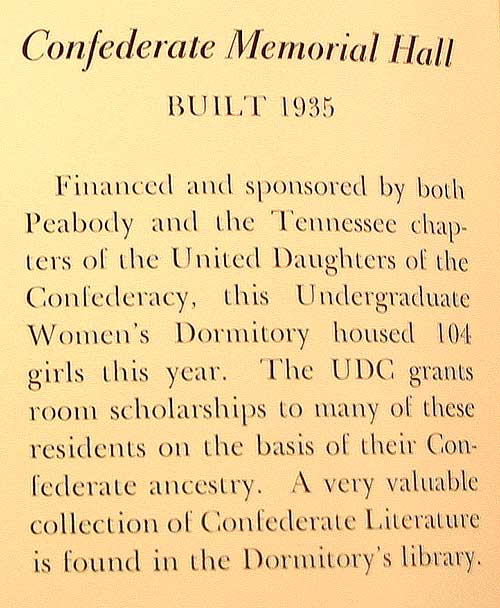

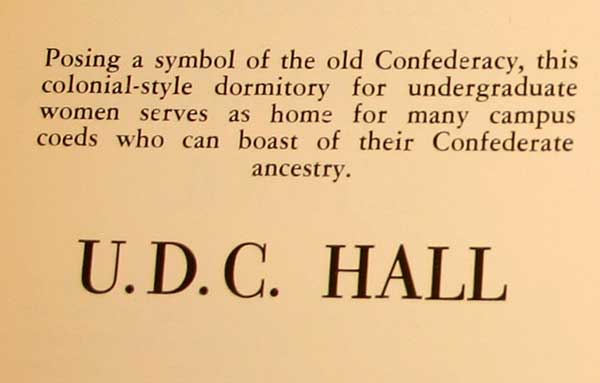
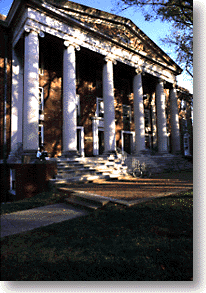
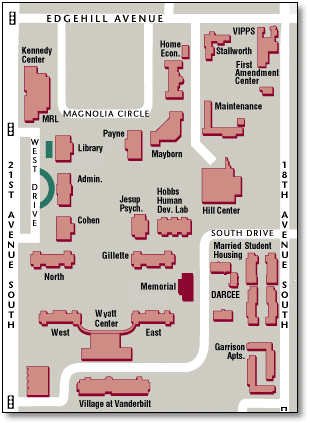
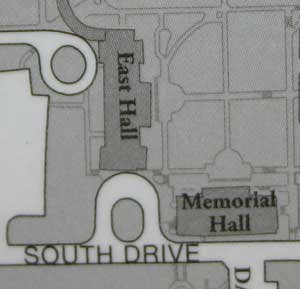
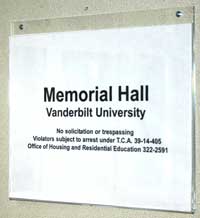
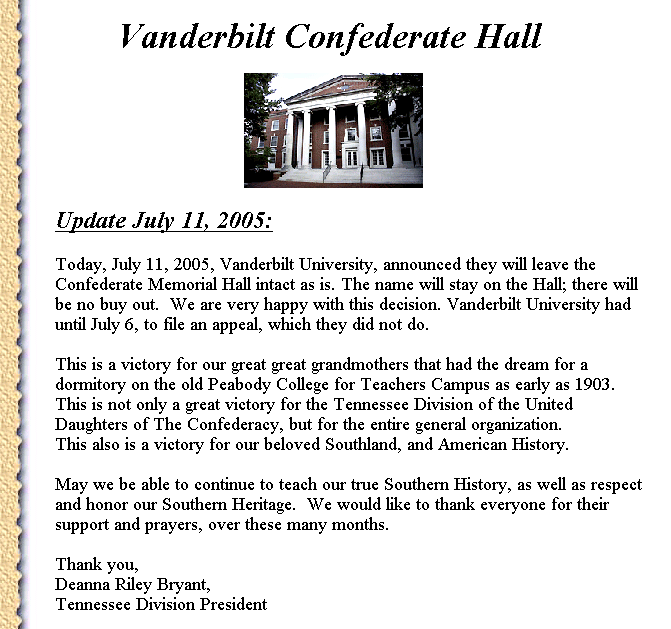
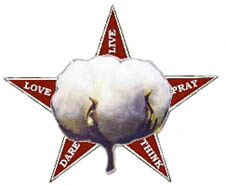
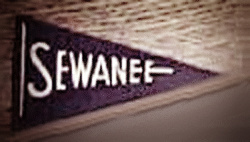
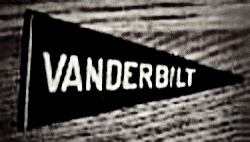
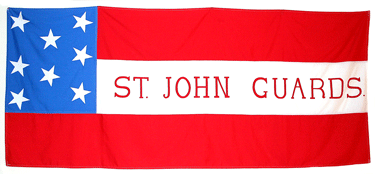
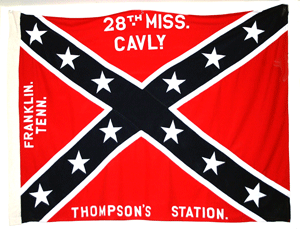
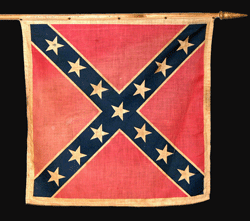
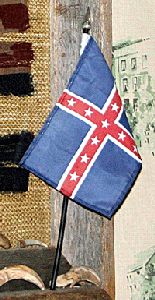
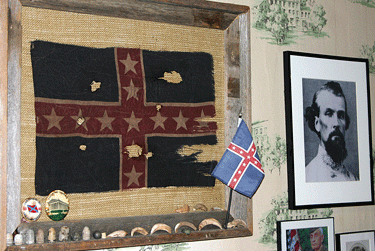
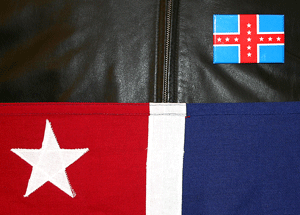
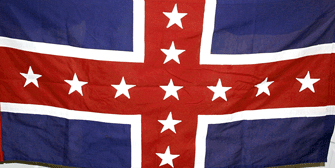
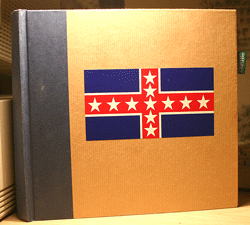
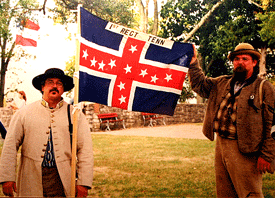
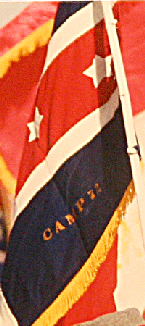
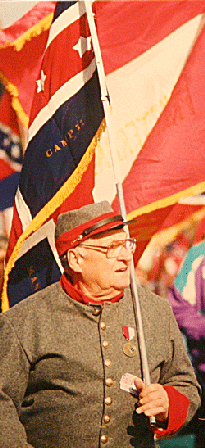
-of-I.gif)
